- Growing Houseplants
- Indoor Garden Ideas
- Cactus & Succulents
- Houseplants Care
- Flowers & Blooms
- Gardening Guide
- Plant Care and Tips
- Beans/Fruit Vegetables
- Companion Planting
- Culinary Herbs
- Flowering Herbs
- Garden Design
- Gardening Ideas
- Growing food
- Growing Trees and Shrubs
- Leafy Vegetables
- Medicinal Herbs
- Patio Gardening
- Root Vegetables
- Shade Plants
- Temperate Fruits
- Tropical Fruits
- Balcony Gardening
- Container Fruits
- Container Gardening Ideas
- Container Herbs
- Container Vegetables
- Rooftop/Terrace Gardening
- Urban Gardening
- Vertical Gardening
- More Than Gardening
- Best and Top of Gardening

- Container Gardening
- Indoor Gardening

8 Types of Wandering Jew Plants+Care Tips

2-Minute Read
When it comes to versatility, there’s none like the adaptable wandering jews check all different types of wandering jew plants in this detailed article.
Wandering Jew Plant comprises various species in the Tradescantia genus. As the plant is adaptable to both indoor and outdoor conditions, it doesn’t matter if you are planning to have it as ground cover, in hanging baskets, or in containers; it’ll do equally well! Also, d o you know you can grow wandering jew in the complete shade, as well as in full sunlight? In full sun, it looks more colorful. Whereas, shade gives its leaves a greenish hue. Here are the Types of Wandering Jew Plants you should consider growing!
Have a look at the plants you can start with just one cutting and a glass of water here
1. tradescantia fluminensis.

It’s a popular indoor houseplant, which is also used as ground cover. Its white flowers are triangular and formed by three petals and look glorious attached to fleshy stems with oval-shaped leaves that are glossy and deep green.
Check out our article on colorful houseplants here !
2. tradescantia zebrina.
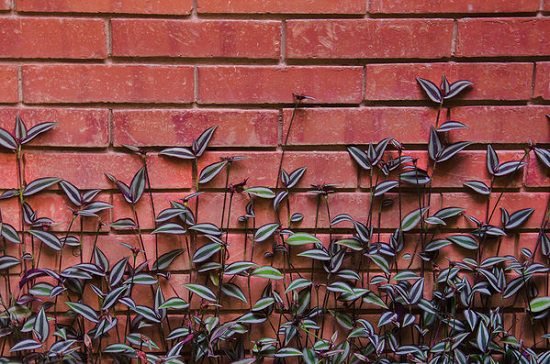
The variegated leaves resemble the stripes of the zebra, hence the name! The purplish-green foliage has a silver outer edge and white stripes running down lengthwise. It grows low to a height of 6-12 inches, and that’s why it can be grown as ground cover. It is one of the best types of wandering jew plants on the list.
3. Tradescantia pallida

It also goes by the name “Purple Heart” and is native to Mexico. Deep purple foliage, adorned with light purplish-pink flowers, looks marvelous and is the reason that it’s one of the most popular types of wandering jew plants! Apart from growing it as a striking ground cover, you can also have it in hanging baskets.
To know about more purple houseplants, click here !
4. tradescantia blossfeldiana.

Commonly known as the ‘Inch plant,’ it’s also referred to as Tradescantia cerinthoidebs . The thick green leaves have a fuzzy texture and a purple hue on the underside. You can easily propagate it from the cuttings, both in soil and water, once it gets growing. It bears delightful clusters of blue, purple, white, or rose pink flowers, making it one of the best types of wandering jew plants on the list.
5. Tradescantia Sillamontana

If precise geometric patterns are your thing, then you’ll love it because of its foliage. Growing from a thick succulent stem, the leaves are around two inches long and covered entirely in white hair. Magneta flower protrudes from the terminal end of the stem in summers.
6. Tradescantia spathacea
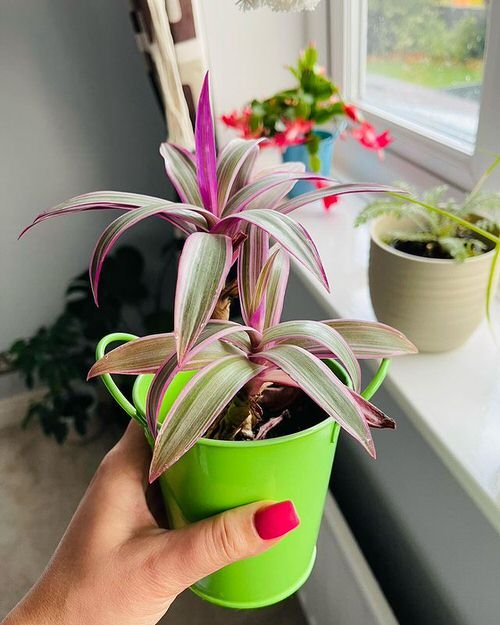
Known as Moses-in-a-basket, Oyster plant, or Boat lily, it is a sub-succulent herb from southern Mexico, Guatemala, and Belize. It grows in 6-12 inches long rosette and sword-like, narrow, and spiral-shaped dark green leaves, with purple bottom sides. The white flowers are enclosed with boat-like purple bracts, hence the name.
7. Tradescantia virginiana

Commonly known as the spider lily, it is a herbaceous perennial from the Commelinaceae family. The plant produces violet-purple to blue, three-petaled flowers, with yellow stamens and dark green arching leaves. You can grow this one of the most popular types of wandering jew plants under full to partial shade.
8. Tradescantia longipes
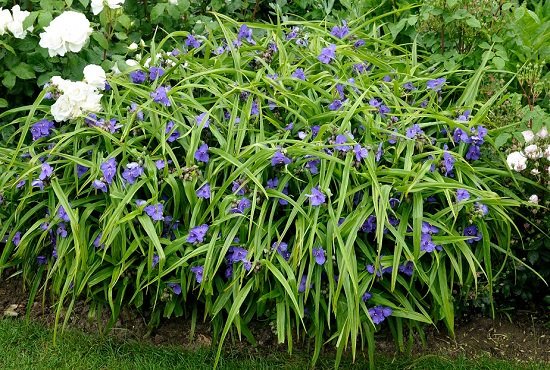
Adorn your garden by growing beautiful, purple-blue flowers of tradescantia longipes or spiderwort. It is native to Southern Missouri and northern Arkansas from the family Commelinaceae. Grow these three-petaled flowers for rock or naturalize gardens, in partial shade, by using well-drained, moist, acidic soil, making it one of the most popular types of wandering jew plants on the list!
Check out our article on indoor rock garden ideas here !
Wandering jew plant care tips.
- Grow a wandering jew plant in bright, indirect light or expose it to full sun, which it won’t mind either. Just keep in mind that low light can fade the markings on leaves.
- Water the plant directly around the roots, avoiding the crown, as it can result in rot.
- The plant prefers slightly moist soil, so maintain the right watering schedule.
- Use an all-purpose, water-soluble fertilizer, once a month, during the growing period.
Recent Posts
6 tricks to grow most colorful and beautiful flowers, 18 common items in home to solve all of pest problems, 7 tricks to grow biggest spider plants, how to get orchids to rebloom 6 orchid reblooming tricks, why every home should have a snake plant, how to flush plants without overwatering, 37 unconventional gardening tricks to become a pro gardener, 17 best plants for shallow pots, join our 3 million followers:, related articles, 6 most beautiful pink philodendrons, 5 beautiful scindapsus treubii varieties to grow indoors, 9 purple indoor plants that grow from cuttings, pothos vs philodendron | difference between pothos and philodendron, monstera lechleriana care and growing guide.
dO YOU NEED TO BRING A POTTED PLANT INDOORS DURING THE WINTER MONTHS?
Depends on the plant and where you live. Do research on the specific plant.
Sooooo number 4…. Is not a blossefeldiana. It’s a flumensis. …. You posted a tri-color-mundula variegata……. Not a nanouk. A nanouk is a blossefeldiana centerthoides
LEAVE A REPLY Cancel reply
Save my name, email, and website in this browser for the next time I comment.

Get the Best of BalconyGardenWeb Directly in your inbox.
POPULAR CATEGORY
- Best and Top of Gardening 1596
- Flowers & Blooms 642
- Growing Houseplants 602
- Gardening Guide 414
- Gardening Ideas 384
© 2023 Balcony Garden Web | All rights reserved
- Privacy Policy
- Terms of Service
- Feedback Page
- Privacy Policy

- Houseplants
- Gardening And Landscaping
Wandering Jew Plant (Tradescantia or Spiderwort): Care, Types, Images and More
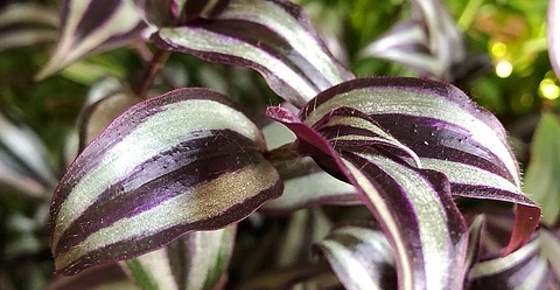
The wandering Jew plant is a common name for different species of plants that belong to the Tradescantia genus. There are around 75 different types of plants in Tradescantia genus and some are called inch plants, spiderwort, striped wandering Jew, Boat Lily, Purple Queen, or flowering inch plant. Wandering Jew plants are great house plants because they are relatively easy to care for. They are also easy to grow because the wandering Jew plant propagates easily from cuttings.
Some types of wandering Jew plants have green and gold leaves, some have reddish leaves, and others have green fuzzy leaves. There are also types of wandering Jew plants that flower. Depending on the species, the wandering Jew plant could have purple, white, or pink flowers.
How to care for wandering Jew plant : For the Tradescantia or spiderwort plant to thrive, grow in a plenty of indirect light and plant in fertile, moist potting soil with good drainage. Make sure the soil isn’t too dry or too damp and keep medium humidity levels. The ideal temperature range is between 65°F (18°C) and 75°F (23°C). You can fertilize every four weeks during the growing season with a diluted liquid houseplant fertilizer.
In this article, you will find all you need to know about this delightful houseplant. You will also get tips and ideas on how to care for your wandering Jew plants.
Wandering Jew Plant (Tradescantia or Spiderwort) – Overview of the Plant and Its Flowers
The botanical name for wandering Jew plant is Tradescantia zebrina and is also called the inch plant. However, the name wandering Jew is given to many herbaceous perennial plants in the Tradescantia genus. ( 1 )
Species of Tradescantias naturally grow outdoors in countries in Asia, Africa, Central and South America, and Australia. Varieties of wandering Jew plants also thrive well indoors, where, like their garden varieties, they grow well when it is warm, sunny, and moderately humid.
According to the United States Department of Agriculture, various varieties of Tradescantias are regarded as invasive plants in the wild. However, it is the fast-growing nature of spiderworts, wandering Jews, and inch plants that makes them perfect houseplants. ( 2 )
Many people like to grow wandering Jews or spiderworts in hanging baskets or grow them in pots to decorate a garden.
What does a wandering Jew look like?
Plants from the Tradescantia varieties have leaves that seem to grow in all directions (hence the term “wandering Jew”).
One of the distinct features about foliage on wandering Jews is that many of them have striped leaves. Sometimes, the leaves can be purple and silver stripes, whereas other types of Tradescantias have leaves that are almost all silver. ( 3 )
You may also notice that some varieties of wandering Jew plant have different colors on the underneath of the leaf. For example, the Tradescantia zebrina has green/silver leaves on the upper side and deep red or burgundy colors on the underside.
Wandering Jew flower
Wandering Jew houseplants also produce attractive flowers. These flowers can sometimes be white or can range in color from pink to various shades of lilac and purple. ( 3 )
However, plant lovers don’t usually grow wandering Jews indoors or outdoors for their blooms. It’s the beautiful variation of leaf colors that makes various types of Tradescantias so desirable houseplants.
Types of Wandering Jew (Spiderwort) Plants
The most popular types of Tradescantia plants to keep indoors are Tradescantia fluminensis ( spiderwort ), Tradescantia pallida ( purple heart ), and Tradescantia zebrina ( wandering Jew ).
Wandering Jew or inch plant ( Tradescantia zebrina )
This type of wandering Jew houseplant has purple and green leaves with a stripe pattern that resembles zebra’s stripes. There are types of wandering Jews that have bluish green leaves and purple hues on the underside.
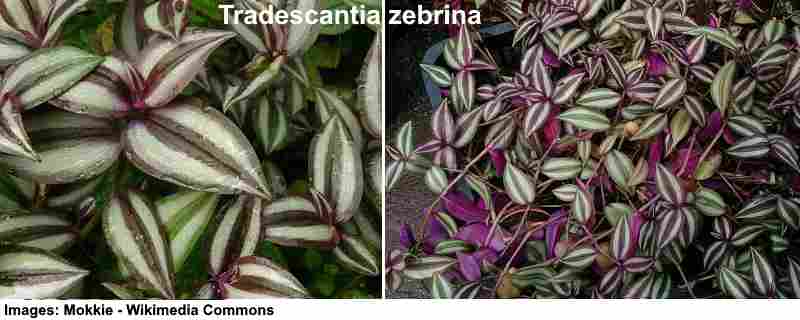
Tradescantia fluminensis (spiderwort)
There are a number of types of Tradescantia that are called spiderwort. This is distinguished from some Tradescantias as it has ovel shiny dark green leaves with pointed tips which are slightly fleshy .
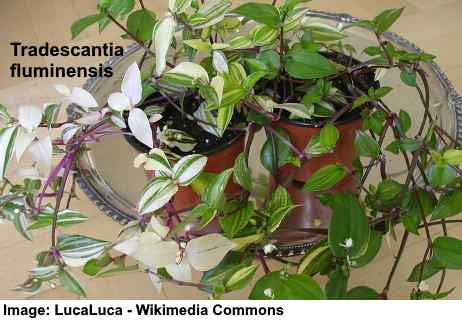
Picture of wandering Jew plant with white flowers
Tradescantia pallida (purple heart)
This type of spiderwort plant is also commonly referred to as wandering Jew. The T. pallida houseplants have vibrant purple leaves and light pink flowers when they bloom.
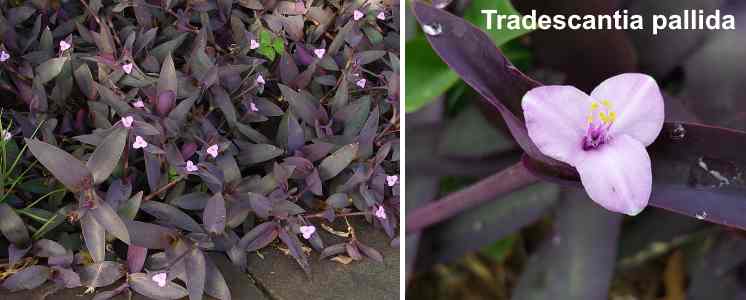
Wandering jew plant with deep purple leaves and light purplish-pink flowers
Tradescantia callisia
The leaves of T. callisia varieties are sometimes referred to as creeping inch plants. They have remarkably stripy leaves made up of green and white stripes.
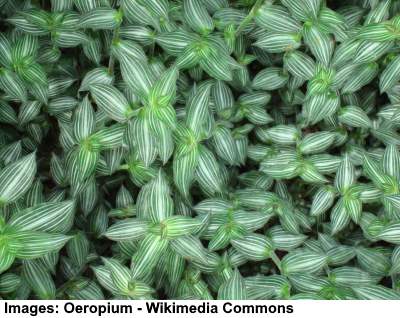
Picture of green wandering jew
Wandering Jew Plant Care (How to Grow Spiderwort or Tradescantia)
Caring for wandering Jew plants is fairly simple and straightforward. All plants in the Tradescantia genus enjoy moist soil, sunny but indirect sunlight, and warm conditions.
So, it doesn’t matter if you have fuzzy leaf Tradescantias, purple queen varieties, spiderworts, or wandering Jews, they all require the same type of care.
Light requirements for Tradescantias
To make sure that wandering Jew plants grow successfully, they require a good amount of light. This ensures that they grow with healthy leaves that have a vibrant green, silver, purple, or lilac colors.
The best place to place wandering Jew plant or spiderworts is in an east- or west-facing location. This means that they get plenty of natural light without being in direct sunlight when the sun is at its strongest.
The only exception is if you have Tradescantia pallida plants with dark purples leaves. They usually thrive in direct sunlight, although you should regularly check them in the summertime to make sure the sun isn’t too strong.
One sign that your Tradescantia isn’t getting enough light is if the color of their leaves starts to fade.
Best growing temperature for Spiderwort or Tradescantia
One of the reasons why wandering Jew plants are good for the home is that they thrive in room temperature.
The best temperatures for growing any type of Tradescantia plant is between 65°F (18°C) and 75°F (23°C). The houseplants also thrive in conditions that are described as “average humidity.”
If you grow Tradescantias outdoors, you should be aware of a drop in night temperatures and lower temperatures during winter. You should bring Tradescantias indoors if the temperature drops.
Best watering techniques for wandering Jew plant care
To care for your inch plant, spiderwort, or wandering Jew, you should keep the soil moist.
The best way to water a wandering Jew is to water the soil thoroughly and let the water drain out the bottom. Another way to water your purple house plant is to put water in the plant pot tray and allow the plant to soak up as much as it needs.
Some beginners who start caring for houseplants such as Tradescantias for the first time buy a soil moisture gauge to help get the soil moisture levels just right.
When it comes to proper watering for your wandering Jew, always make sure the soil isn’t too dry or too damp. Usually, weekly watering in the summertime is enough to keep your Tradescantia growing well.
The best fertilizer for wandering Jew houseplants
The reason why Tradescantias are so easy to care for is that they don’t usually require any feeding.
If you decide to encourage your inch plant or spiderwort to grow faster, then choose a liquid organic fertilizer mixed at half strength and use once a month.
Most houseplant growers don’t feed their wandering Jew plants in the fall or winter as they tend to become “leggy” or “straggly.”
Which type of soil to use for Tradescantias
To properly care for wandering Jew varieties of houseplants, you only need to plant them in regular potting soil.
How to prune wandering Jew plants
In time, Tradescantia plants require some cutting back and pruning. This helps to give your houseplant a bushier appearance and also gives you plenty of cuttings to propagate.
For Tradescantia pruning, you just need to pinch off the stem tips to leave about ¾ of the length. This will encourage your plant to grow better and become more attractive.
Growing Plants from Wandering Jew Cuttings
Even for the most novice of houseplant owners, propagating any type of Tradescantia plant is very easy. After you have cut back your “leggy” wandering Jew stems, you will have a large number of cuttings that you can use to grow new house plants.
How to propagate wandering Jew plant leaves
To prepare your wandering Jew cuttings or purple heart plant cuttings for propagation, you need a couple of stems about 1-2 inches long. Remove all the leaves apart from 2 or 3 at the end of the stem.
There are 2 ways you can grow wandering Jew plants from cutting:
- The first way is to just put a cutting in potting soil and wait for it to grow. All you have to do is make sure that the soil is kept moist and not overly damp.
- The other way to grow a Tradescantia from a cutting is to put the stem in water. You should notice that new roots start to grow within a week. When you notice new roots growing, you can transfer your cuttings to a pot to grow a new houseplant.
Wandering Jew Outdoor Plant Care
Tradescantia plants are great garden plants and grow well outdoors in warmer zones in the U.S. (USDA growing zones 9-11). In fact, it is because they grow so well outside in warmer countries and are quite invasive that they are classed as a weed in certain countries.
You can easily care for any Tradescantia plants to add color and beauty to your garden. Purple hanging plants or wandering Jew vines with stripy leaves can grace any patio, doorway, or garden area.
As with caring for wandering Jews or spiderworts indoors, Tradescantia plants growing outdoor should be protected from direct sunlight. So, place your plants in shady areas of the garden. But it’s good to remember that some bright light will help the wandering Jew plant produce more flowers.
Temperature
Also, frost can damage the plant, so, if you live in areas where fall and winter temperatures drop below 10°F (12°C), you should take them indoor and continue to grow them as houseplants.
Problems with Wandering Jew Plant (Spiderwort)
Even though it is relatively easy to care for wandering Jew plants, you can still come across certain problems.
Let’s look at some growing tips for Tradescantia plants to avoid or remedy some common problems.
The most common pest when growing wandering Jews indoors are bugs such as spider mites or aphids . The appearance of these pests on your bushy spiderwort or inch plant may be a sign that conditions are too dry.
To help remedy the problems of pests on your Tradescantia, mist the leaves regularly and make sure the soil is moist enough. You may need to wash off the mites with water to help get rid of the infestation.
One of the beauties about caring for wandering Jew plants indoors or outdoors is that they are not susceptible to disease. Usually, any discoloration of the leaves or poor growth is connected to the soil being too dry or too damp.
Fungal infections
Overwatering spiderworts, inch plants, or wandering Jews can cause a fungal growth called botrytis to develop in the roots.
Brown leaves
As with most problems associated with caring for Tradescantias, brown leaves can also indicate that the growing environment isn’t right. The leaves of your wandering Jew could have turned brown because of too much or too little sunlight. Also, too much watering can affect leaf health.
Where to Buy Wandering Jew Plants
Many garden centers and online stores stock many different varieties of wandering Jews. You will also find that Tradescantia cuttings are available online.
Because many different types of wandering Jews are so easy to grow yourself, you could ask a friend for a cutting if they have the plant. You can also get more Tradescantia houseplant or garden plants by propagating cuttings from plants you already have.
FAQ Related to Wandering Jew Plant (Tradescantia)
Do they need any pruning.
To properly care for wandering Jews, the leaves and stems require pruning. The stems can grow quite long and start losing their leaves from the base. The best time to prune any Tradescantia plant is just before the growing season in late winter or early spring.
You may also find that Tradescantias grow better if you give them a mild prune in late summer.
How to prevent wandering Jew roots from rotting?
Go easy on the watering to stop Tradescantia plants’ roots from rotting. Water them enough to keep the soil moist during summertime and only occasionally in the winter.
Are wandering Jew plant leaves toxic to animals?
While not toxic to cats or dogs, the leaves of wandering Jew plants can cause irritation. If you have pets that like to nibble on leaves, you can still benefit from the beauty of Tradescantias if you grow the outdoor plant in hanging baskets.
Can I grow my Tradescantia plant outdoors?
Yes, you certainly can. Wandering Jew plants grow well out of doors in warm climates. During the summertime, you can move your indoor houseplants to the garden and place them away from direct sunlight.
Dashes of purple colors, bright pinks, or interesting green and purple stripped leaves can make an interesting feature in any garden or balcony.
Can you train a wandering Jew plant?
Tradescantia plants are easy to train because their stems can grow very long and you can wrap them around objects. Wandering Jew plant stems can grow up on trellises or obelisks or up around any other item.
Heavily pruning wandering Jews in late winter can also help to train the plant to grow into a colorful bush.
How fast does wandering Jew plant grow?
Tradescantia cuttings should start growing roots within a week or so. Once the plant is established, you can expect it to grow about an inch every week. Some people claim this is the reason that some Tradescantias are called inch plants.
Can Tradescantia houseplants cause allergies?
The sap of wandering Jew plants or prolonged skin exposure to its leaves could cause allergic reactions.
The journal Allergy reports that indoor plants such as Tradescantia can also cause symptoms such as itching of the throat, swelling, wheezing, and runny eyes and nose. ( 4 )
Do wandering Jew varieties have any health benefits?
Although not widely used, extracts from Tradescantia zebrina have certain medicinal properties. You can buy inch plant herbal liquid extracts that are said to have many antioxidant properties.
Researchers have found that therapeutic compounds in Tradescantia extracts have antibacterial, anticancer, and antioxidant uses. ( 5 )
Related articles:
- Moses In Cradle Care: How to Grow Tradescantia spathacea
- Chinese Money Plant Care: How to Grow Pilea Peperomioides
- Dracaena Marginata Plant Care: How to Grow Madagascar Dragon Tree

Wandering Jew Plant (Tradescantia zebrina): Types, How to Grow and Care
Sharing is caring!
Plants with trailing and creeping habits are some of the best plants to keep. They are fast-growing and make thick carpet of groundcovers for gardens in no time and they also create striking hanging indoor plants.
Among the all-time best trailers to grow is the wandering jew. Easy to maintain and drapes beautifully, this colored plant will make any space more inviting and interesting.
Medicinal Properties
Propagation and maintenance, what is a wandering jew plant.
Tradescantia is one of the 37 genera under the plant family Commelinaceae (1). Some of its 75 species are commonly called ‘wandering jew’ (also known as inch plant), a name they adapted due to their long lifespan like the Jewish character from a Christian folklore.
Another name for this group of herbaceous perennial plants is ‘spiderwort’ after the spiderweb-like sap they produce when the stem breaks. They are native to Canada, Mexico, and Argentina and have been naturalized in other parts of the world (2).
The most common tradescantia grown ornamentally is the T. zebrina also previously called Zebrina pendula . It has long fleshy stems where the wandering jew plant leaves and roots appear. The lance-like leaves are a mixture of green and purple with silver stripes on the upper side and deep purple under (3). The plant grows close to the ground and can only reach 20 to 30 cm high.
Does Tradescantia Zebrina Flower?
The wandering jew is considered an ornamental plant primarily because of its showy colorful foliage but the plant does produce pink flowers.
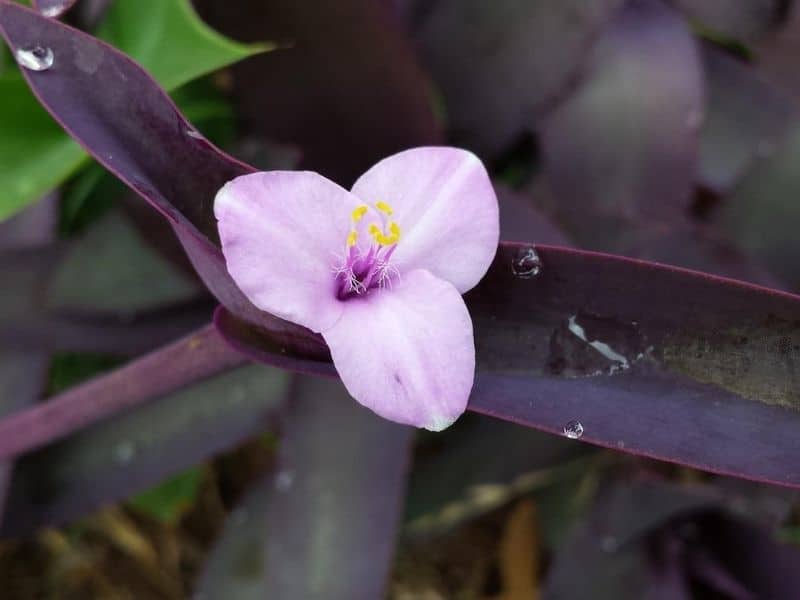
Small three-petaled pinkish purple flowers appear sporadically throughout the year (4). The resulting fruit is a capsule containing tiny brown seeds.
Is it Toxic to Pets?
Spiderworts are normally harmless plants but they contain toxic properties that may cause mild gastric problems and dermatitis to pets. Although they don’t lead to anything serious, it will be safe to keep the plants out of reach of pets and to keep the hands protected when dealing with the sap of the plant.
Because of the plant’s hardiness and adaptability to different environments, the wandering jew establishes well, in fact so well that it can be considered an invasive species. In countries like Australia, the plant has the capacity to invade natural vegetation. Although growing them is not prohibited, everyone is obliged to keep the plant’s growth under control (5).
Studies showed that Tradescantia has significant effects as an anticancer, antioxidant, and antibacterial medicinal plant. In traditional Chinese medicine, the wandering jew plant is highly valued as treatment for kidney failure.
The extract from the whole plant is cooked with dates, ginger, and water and consumed by patients. The plant is also known to treat high blood pressure, cough, urinary tract infection and tuberculosis (1).
How to Grow and Care for a Tradescantia
Here’s how to care for a wandering jew plant, one of the easy house plants to own.
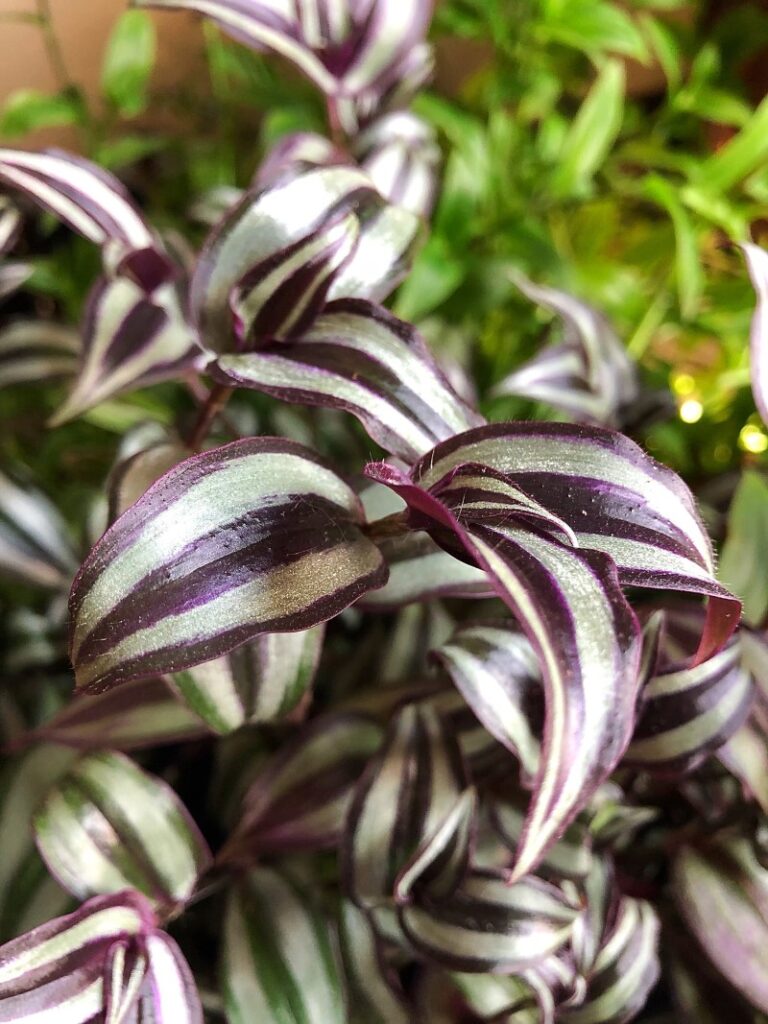
Light and Water
In the wild, the wandering jew plant thrives without assistance but under the right conditions. It likes filtered sun so indoor fluorescent light is enough. Placing them by the window and turning the plant every two weeks will keep the leaves colorful and the growth even on all sides (3).
The plant spreads easily in damp areas that’s why it naturally grows along riverbanks and roadsides. When potted, the soil should be kept moist but well-drained. Saturated soil often causes root rot.
Fertilize your Tradescantia plant once a month during the growing season (spring and summer) with a balanced, water-soluble fertilizer diluted to half strength. Avoid fertilizing in fall and winter when the plant is dormant. Over-fertilizing can lead to fertilizer burn and damage the plant, so follow the instructions on the fertilizer package carefully.
Temperature and Humidity
Spiderworts like it warm but there should be enough air circulation or else the leaves will sag. During the heat of the summer, taking the plant outside under shade will provide the necessary cool to the plant.
Mist the hanging plant early in the morning and late in the afternoon. If the plant is on a table, place a glass of water beneath the leaves or put the pot on a wet pebble tray. This will humidify the immediate vicinity of the plant aiding in its photosynthesis and transpiration processes.
Pests and Diseases
The most common living enemies of the wandering jew are aphids, mealybugs, scale, white flies, and spider mites. Manual removal at the onset of infestation is effective but they should be closely monitored as serious attack may lead to the plant’s death. If left unnoticed and the infestation has become severe, get rid of the plant by burning to avoid contamination.
Since the creeping inch plant is mainly soft almost like a succulent, soggy soil and too wet conditions lead to root and stem rot (4). As long as the plant is receiving just enough moisture, this disease will be avoided.
Propagating wandering jew plants is very easy. They can grow from seeds but will take years to establish so the more convenient stem cutting is best. The trailing or creeping stems form nodules where the roots will eventually grow as it comes in contact with the potting soil (2). When the hanging plant has longer trails than intended, it can be trimmed and the resulting stem cuttings can be rooted to form new plants.
There will be times that the potted wandering jew will become leggy, especially if it’s been receiving more shade. To promote a bushier growth pinch back by literally pinching the tip of the plant where the new growth occurs (4). This practice allows the formation of lateral stems.
In two or three years, these hardy plants may become pot bound, with the roots taking up most of the space in the pot. Repot in a larger container with a good mixture of soil, coarse sand, and compost to replenish the nutrients and provide room for the roots to breathe. Additionally, fertilize once every two months by foliar application just to improve plant vigor.
Common Varieties of Wandering Jew
The oldest and most common indoor wandering jew, this species has leaves alternating, often overlapping when young, purple leaves with silvery green thick stripes and solid purple underside. The stem is also a mixture of purple and green.
T. blossfeldiana
The leaves of this species are quite thicker, glossy, and covered in miniscule hairs called trichomes. The three-petalled flower is an ombre of white and pinkish purple with yellow anthers.
T. fluminensis ‘Tricolor’
This attractive variety showcases leaves with white, lilac, and green variegation. It appears smaller than the common wandering jew but bushier in form.
T. sillamontana
This whimsical species looks frosted with its silvery trichomes covering the entire plant. The green leaves are still alternately arranged but more compact which make a potted plant look more bushy than trailing. The light color of the leaves provide a complementing backdrop to the bright purple flowers.
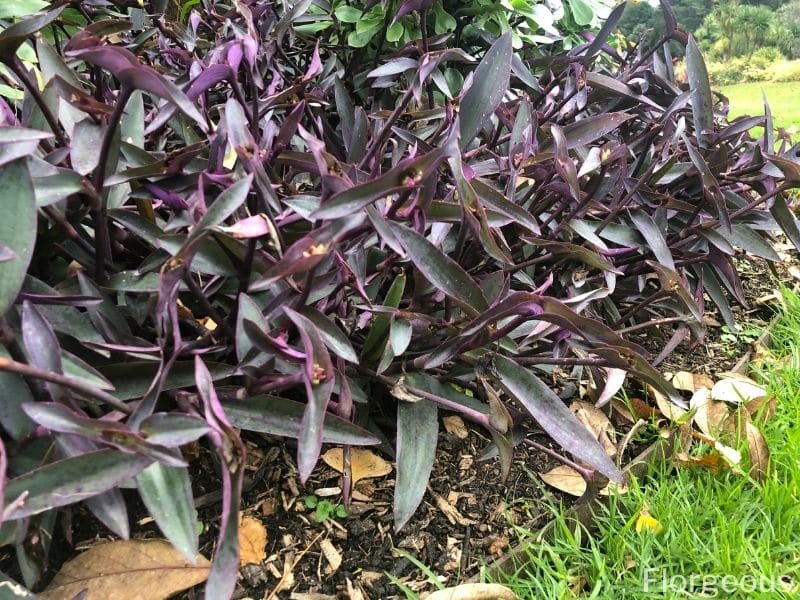
The leaves and stems of this species are in striking deep purple color hence the common name ‘ purple heart ’. Under shaded, they turn a hint of dull green. The leaves are also longer and have wider space in between.
Does Wandering Jew plant need full sun?
Wandering Jew plants (Tradescantia zebrina) prefer bright indirect light but can tolerate some direct sun, especially in the morning or late afternoon. However, prolonged exposure to intense sunlight may cause their dark green leaves to scorch.
How do you care for a wandering Jew plant indoors?
To care for a Wandering Jew plant indoors, place it in a location with bright, indirect sunlight, such as near a window. Water it when the top inch of soil feels dry, typically every 1-2 weeks, and provide well-draining soil. Additionally, mist the plant occasionally to increase humidity and remove dust from the leaves.
How do I make my Wandering Jew fuller?
To make your Wandering Jew plant fuller, prune it regularly to encourage branching and bushier growth. Pinch off the tips of the stems or trim back leggy growth to promote new growth and create a more compact appearance. You can also propagate wandering jew cuttings to create new plants and fill out the pot.
How long do Wandering Jew plants live?
Wandering Jew plants are generally long-lived when provided with proper care. With the right growing conditions indoors, they can thrive for several years, often becoming fuller and more lush over time with regular pruning and maintenance.
Reference List
(1) Dash, G., et. al. Tradescantia zebrina: A Promising Medicinal Plant. 2017. IAJPS, 4 (10). P. 3498-3502 .
(2) Arakelyan, H. Tradescantia zebrina- Mother Nature Healing. 2019. Researchgate.
(3) Vermeulen, N. Encyclopedia of House Plants. Taylor and Francis. 1999. P. 320.
(4) North Carolina State Extension. Tradescantia zebrina. NC State University. 2018. https://plants.ces.ncsu.edu/plants/tradescantia-zebrina/ . Accessed on 12 August 2020.
(5) The State of Queensland. IPA-Zebrina. Department of Agriculture and Fisheries. 2020. https://www.daf.qld.gov.au/__data/assets/pdf_file/0020/51284/IPA-Zebrina-PP102.pdf . Accesed on 12 August 2020.
Photo by Wirestock/depositphotos
Have you seen these?

Growing and Caring for Black Mondo Grass (Ophiopogon planiscapus ‘Nigrescens’)

Growing and Caring for Switchgrass (Panicum Virgatum)
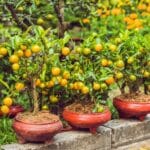
Growing and Caring for a Kumquat Bonsai Tree (Citrus Japonica)
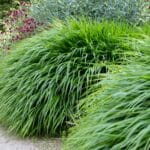
Growing and Caring for Japanese Forest Grass (Hakonechloa macra)

11 Best Tomato Companion Plants to Grow in Your Garden

Top 4 Catnip Companion Plants and Creative Landscaping Ideas
About the author.

- Indoor Gardening
- Houseplants
- Hydroponics
- Houseplants Made Easy Book

How To Care For A Wandering Jew Plant (Your Complete Guide)
When it comes to houseplants able to brighten up indoor spaces, it doesn’t get much more colorful than the variegated foliage of a Wandering Jew plant ( Tradescantia zebrina ). With their hardy nature and ease of care, they are a perfect choice for those feeling they kill everything they bring indoors. We’ve listed a quick summary of their care below.
How To Care For A Wandering Jew Plant: Grow your Wandering Jew in well-drained soil, kept moist but not soggy through regular watering. Create humidity, keep indoor temperatures between 50°F (10°C) to 85°F (29°C) and fertilize monthly.
Continue reading because we’ve taken all the guesswork out of caring for your Wandering Jew and keeping it healthy and happy for years to come.
How To Care For A Wandering Jew Plant
Wandering Jew plants belong in the Commelinaceae family, which includes around 652 different species. The family is made up of herbs, climbers and several epiphytes, with some used as outdoor and indoor ornamentals like Wandering Jew.
There are three different plants commonly known as Wandering Jews; Tradescantia fluminensis , Tradescantia pallida , and Tradescantia zebrina. Of the three, Tradescantia zebrina is the most common one grown and has the most eye-catching and colorful foliage. All three have the same requirements for care and good growth.
Native to Mexico and Guatemala, Wandering Jew is classified as a tender evergreen perennial that performs well planted outdoors in frost-free regions. Those living in cooler environments can easily grow it as an indoor plant planted either in containers or in hanging baskets. Outdoors it’s typically used as a quick-growing groundcover.
Although a common name shared with several very different plants, Wandering Jew is often called Inch Plant , due to the leaf margins being spaced about an inch apart. You may also find Wandering Jew listed as Zebrina Pendula , but is synonymous with Tradescantia zebrina and is the same plant.

When it comes to Wandering Jew plants, it’s all about the attention-grabbing foliage. The succulent stems give way to leaves that are a deep purple on their undersides with the upper portion striped in silvery-gray and greenish-blue. The oval leaves grow to about 2.5 inches long and the stems grow about 2 feet long. It makes a beautiful plant used in hanging baskets, with the long stems cascading over the side.
Even grown indoors, Wandering Jews have a fast rate of growth and before you know it, the plants will be spilling over your container’s or hanging basket’s sides. Whereas some indoor plants seem to take forever to fill out, this isn’t a problem with properly cared for Wandering Jew plants.
There are several other cultivars (varieties) of Wandering Jew, which include:
- ‘Purpusii’ has unstriped, hairy foliage that is either solid red or reddish-green.
- ‘Quadricolor’ produces metallic-green foliage striped in red, white and green.
Wandering Jew plants are the ideal candidates for beginner houseplant gardeners due to their hardiness and robust growth. Below we’ve outlined all the basics of their proper care, as well as identifying and preventing any potential problems so you can enjoy your Wandering Jew for years to come. The best indoor plants are those that are happy and healthy.

Soil Conditions For Wandering Jew Plants
Wandering Jew plants tolerate growing in a wide range of soils provided they drain well. Although they do tolerate and prefer moist conditions, the soil must drain properly to prevent root and stem rot from occurring. Therefore, it is necessary to use a lighter weight soil mixture in your pots rather than heavier soils that don’t provide proper drainage.
Straight potting soils are usually too heavy, retain too much moisture and have a tendency to leave the soil soggy. You can use a heavier potting soil in your soil mixture, just be sure to incorporate a lighter soil mix to provide the Wandering Jew the drainage required for healthy growth.
Commercial potting mixes work well and many have a slow-release fertilizer mixed in, which cuts down on the need for frequent feedings. The slow-release blends usually continue to fertilize the Wandering Jew for about three months.
You can also make your own soil by mixing several ingredients together such as:
- Using equal parts of compost and a potting mix.
- Mixing equal portions of compost, peat and potting soil or a potting mix.
- Using equal portions of a course sand, compost and potting soil or a potting mix.
Whatever soil you choose to use, just make sure it drains well and contains a bit of fertility for the best performance of your Wandering Jew plants.
Preferred Light Conditions
Although Wandering Jew plants tolerate lower light conditions than many houseplants, to help retain those striking colors the plant is known for, place the container in a location indoors receiving filtered sunlight. If your plant starts losing some of the color in the foliage, move it to a location that receives a bit more light.
In addition, if the lower portion of the stems start suffering leaf drop, the Wandering Jew isn’t get enough light and needs to be relocated to a brighter area inside the home.
Once the warm weather of spring arrives and if you’d like to give your Wandering Jew a bit of a break from its indoor location, place it in an outdoor spot that receives partial sun to partial shade. Moving it to an outdoor location with too much sun may leave the foliage sunburned.
Indoor Temperature Requirements
In the Wandering Jew’s native environment, temperatures are consistently warm without the threat of frosts or freezes. Generally, if the indoor temperatures inside your home are comfortable for you, they will also be comfortable for your Wandering Jew plant.
Indoor temperatures between 50°F (10°C) to 85°F (29°C) are a good range for your Wandering Jew plants. Plants grown in this temperature range produce the healthiest growth.
If you gave your plants a break from their indoor location, just make sure to bring them back indoors before the cold weather of winter strikes.
Water Requirements
Wandering Jews prefer soils that are regularly kept moist, not soggy, compared to many indoor houseplants. However, this doesn’t mean the soil should be kept so wet they never begin to dry out. Keeping the soil too wet for too long promotes rot to set in and you may end up killing your Wandering Jew plants. Your Wandering Jew is more likely to forgive you if you forget to water over watering too much and too often.
A good rule to follow is if the soil starts to feel like it’s about to become very dry, apply water. It’s easy to know exactly when to water by:
- Sticking your finger into the soil and if the top inch is starting to feel dry, water until it runs from the container’s bottom drain holes.
During the warm growing season of spring through summer, you can probably expect to water once each week. However, during winter when the Wandering Jew goes into dormancy (its growth slows), you will probably only need to water about every other week.

Humidity Requirements
Compared to many tropical plants grown indoors, Wandering Jew plants aren’t quite as fussy about humid conditions , but still need some humidity for the best growth and performance. Don’t let the thought of creating a humid environment stress you out because replicating humidity for your indoor plants is relatively easy and basic.
- Fill a spray bottle with room temperature water and mist the Wandering Jew several times each week.
- If you’re growing the Wandering Jew in a container and not in a hanging basket, you can set the pot on a tray of pebbles. As you water, the water seeps from the bottom drain holes onto the tray of pebbles and as it evaporates, it creates a humid environment around the plant.
- If your bathroom gets the appropriate amount of light for the Wandering Jew, you can allow it to grow there. Due to the regular use of water in a bathroom, moisture is created, creating the humidity the Wandering Jew requires.
Fertilizer Needs
Unless the soil mixture contains a slow-release fertilizer blend, which feeds the Wandering Jew for about three months, fertilizing monthly is sufficient for proper growth. You have several choices when it comes to fertilizer you can use for your Wandering Jew plant.
- Use a houseplant fertilizer applied at half-strength, applied when you do your regular watering.
- Use an all-purpose, water-soluble blend for outdoor and indoor plants, applied at half-strength and used during your regular watering schedule.
- If your soil mixture didn’t contain a slow-release fertilizer or it’s been about three months, if one was contained in the soil, you can reapply slow-release fertilizer granules sprinkled over the top of the soil. Follow the package directions on amounts.
When it comes to the appropriate time of year to fertilize the Wandering Jew, only fertilize while it’s actively growing, which is spring throughout summer. In winter, the plant goes through a dormant stage and all growth slows, so there is no need to apply fertilizer. Wait until spring arrives before you resume fertilizing the plant.
The one thing you will need to pay attention to when it comes to fertilizing is the buildup of salts in the soil, which can result in foliage burns. Wandering Jew plants have a low tolerance to salty soils. Preventing any salt buildup is relatively simple:
- If the plant isn’t too big, you can take the entire pot to your sink or bathtub and allow water to run slowly through the soil for about five minutes, flushing out any salts.
- If the plant is too big for indoor flushing, take it outside and allow water from the hose to run slowly through the soil for about five minutes. Allow the water to drain and then bring the plant back indoors.
Pruning Requirements
The pruning needs of Wandering Jew plants are low. If you want to control the size of the plant and promote bushier growth, you can pinch off the tips of the stems. To keep the plant always looking its best, you can trim off any broken, dead or damaged stems and leaves throughout the year.
When using pruning tools to trim your Wandering Jew always make sure they are clean so you don’t transfer any diseases or pests to your plant. This is as easy as wiping off the blades with alcohol.
Some people experience skin irritations when handling the cuttings due to the sap , so if you are unsure if you are one of these unlucky gardeners, it might be best to wear gardening gloves when pruning or handling Wandering Jew cuttings.
Potting Needs
If you purchased your Wandering Jew already potted in a hanging basket or 1-gallon container, it should thrive as is for a year or more before it requires repotting. However, if you received rooted cuttings in smaller containers like 4- to 6-inch pots, you most likely need to repot them into something a bit larger so they can grow properly.
This also cuts down on the need for repotting in a month or two as the Wandering Jew begins to outgrow its present pot.
When it comes to the pot’s material, any type works quite well for growing this plant from clay to plastic. However, if you grow your Wandering Jew in a pot made of a porous material like terra cotta, the soil is going to dry quicker than if it was growing in a plastic pot. This means you will need to water more frequently.
Once your Wandering Jew starts getting too big for its present container, it’s time to repot it into one that is around 1- to 2-inches larger. Although the plant likes a moist soil, make sure the pot has bottom drainage to prevent the possibility of rot due to conditions that are too wet.
If you like, you can dress the container up by placing the draining one inside a decorative pot without bottom drain holes, but be sure to empty out any additional water once the inner pot thoroughly drains.
I think a decorative outer pot can add so much to the beauty of your houseplants, so I do this with almost all of my houseplants. Read this article which discusses my favorite decorative planters if you need some inspiration.
Potting and repotting your Wandering Jew is basic:
- Gently remove the Wandering Jew from its present container, being careful not to break the succulent stems.
- Fill the new container that drains about a quarter of the way full with a fertile, well-drained potting mix.
- Check the Wandering Jew’s root system and if it’s growing bunched together and filled the previous pot, gently tease the roots apart with your hands.
- Place the Wandering Jew into the new container and finish filling it with soil.
- Water the Wandering Jew until it runs from the bottom drain holes and place in a bright location indoors.

Propagating New Plants
When it comes to propagating new plants, Wandering Jew is about as easy as it gets. Even if you have never done this before you should have success starting its cuttings. When you trim to control its size, don’t throw those cuttings away but use them to start additional plants.
You have two choices when it comes to rooting your cuttings and both are easy. The first thing you will want to do is obtain your cuttings. Trim off a 4- to 6-inch cutting from the mother plant and you’re ready to start rooting.
Rooting in Soil
- Fill a 6-inch to 1-gallon container that drains with a rich, well-drained potting mix. Water the soil to settle it.
- Make about a 2-inch indentation in the soil where you want to place the Wandering Jew cutting.
- Remove the bottom leaves from the cutting where you will be inserting it into the soil. You can do this by pinching them off with your fingers.
- Place the cutting into the indentation and firm the soil up around it with your fingers.
- Water the soil again and place the cutting in the same light conditions where the mother plant was thriving. Keep the soil moist but not soggy.
Roots should form in about four weeks and after about eight weeks, the Wandering Jew cuttings should form a new root system.
Rooting in Water
- Fill a glass jar or plastic container with about 3-inches of room temperature water.
- Pinch off any leaves from the section of the Wandering Jew cutting that will be submerged in the water.
- Place the cutting in the water and situate the container in a bright indoor location.
- Change the water in the container about every other week, or when cloudy.
You should start seeing new roots form on the cuttings in several weeks. Once the roots are several inches long, you can repot the cuttings into a draining container filled with fertile, well-drained soil.
Disease Problems
Wandering Jew plants grown indoors are hardy and don’t have major diseases that plague them. However, rot is their biggest enemy and caused by soils that are too heavy and do not drain properly, retaining too much water. Overwatering and planting in pots that don’t drain are other causes of rot problems.
When rot rears its ugly head you’ll notice the bottom stems, as well as the foliage turning black, becoming mushy and the entire plant collapses. If this happens and seems to start affecting the entire Wandering Jew plant, you can trim off healthy, unaffected sections of the stems and repot into fresh, clean soil. Since there is no saving the rot-infected sections, you will have no choice but to discard those portions of the plant.
Steps for preventing problems with rot include:
- Using lightweight potting mixes that drain well and aren’t too heavy, which leads to the soil remaining too wet for too long. Some types of potting soils have a tendency to be heavy and need mixing with a potting mix, compost, coarse sand or peat.
- Don’t overwater your Wandering Jew. Although they prefer growing in moist soils, this doesn’t mean constantly soggy soil. Stick your finger into the soil and if the top inch is starting to become dry, apply water until it runs from the bottom of the pot.
- Make sure the pot you are growing your Wandering Jew in has bottom drainage. If you have placed the pot inside a decorative one that doesn’t drain, make sure to empty all the water from it after you have watered.
Pest Problems
Although indoor Wandering Jew plants are not big candidates for problems with pests, several can cause an infestation and problems. As with any pest problem indoors or outside in the garden, quick control is always the best option to keep your plants healthy. It also assures the pests do not migrate to your other plants causing even bigger problems and headaches.
The pests most likely to infest your indoor Wandering Jew plants are:
- Aphids: Aphids come in a host of different colors and are tiny, pear-shaped, sap-sucking insects that usually congregate in large masses along the Wandering Jew’s stems. In large infestations, they can kill the plant or severely weaken it. If the infestation is small, you can wipe the pests off the stems with a moist cloth. However, if the infestation is large, you will probably have to spray the plant with an insecticidal soap or Neem, reapplying as suggested on the package.
- Spider Mites: Spider mites are another sap-sucking pest that if left unchecked can quickly kill or weaken the Wandering Jew. It is easy to tell if you have a spider mite problem as these tiny, white pests spin fine webbing that covers the plant. Spider mites can be the bane of houseplants so quick control is necessary. Use an insecticidal soap or Neem and spray the entire plant, reapplying as suggested on the product label.
- Whiteflies: Whiteflies are other sap-sucking pests that can quickly kill or weaken your Wandering Jew if not quickly controlled. They are another easily identifiable pest, as just touching the plant sends the tiny whiteflies from the plant’s foliage and into the air, hovering right above it. Control the problem with an insecticidal soap or Neem, spraying the entire plant and reapplying as suggested on the product’s label.
- Mealybugs: Sap-sucking mealybugs show up on the Wandering Jew as cottony masses covering the stems and crotches of the foliage. Control the problem by spraying the entire plant with insecticidal soap or Neem, reapplying as suggested on the product’s label. If the infestation is small, you can also wipe them from the stems and leaves with a damp cloth.

Is Wandering Jew A Perennial?
Wandering Jew plants are considered a tender, evergreen perennial. Unlike annuals, and if grown in preferred conditions with proper care, Wandering Jews should live and keep on growing for quite a few years, both indoors and outside.
Why Are My Wandering Jew Plant’s Leaves Losing Their Color?
If your Wandering Jew is growing in light conditions that are too low, the leaves will start to lose their color and become duller. When grown indoors and to keep the bright color on the foliage, make sure the Wandering Jew is growing in a location receiving bright light.
Why Are My Wandering Jew’s Leaves Dropping?
Wandering Jew plants grown in light conditions that are too low will start dropping leaves at the base of their stems. Solve the problem by moving the plant to an indoor location that is brighter. For the best leaf color and growth, they prefer an indoor location receiving bright light.
Why Are My Wandering Jew Cuttings Rotting In Soil?
If your Wandering Jew cuttings are rotting in soil it could be one of two things causing the problem. The soil you are growing the cuttings in may be infected with a fungus that is infecting them with rot.
You can solve the problem by planting the cutting in a sterile, well-drained potting mix. Another cause might be the soil is remaining too soggy and the container doesn’t drain.
Make sure you are using a soil that drains well and doesn’t remain soggy, do not overwater and use a container with bottom drainage. Water the cuttings when to top inch of soil feels dry to the touch.
Can I Root Wandering Jew Cuttings In Water?
Wandering Jew cuttings root quite well in water. Fill a container with several inches of water, remove any leaves that would be submerged and stick the cut end into the water.
Fill the container with fresh, clean water about every other week. You should start seeing root form on the cuttings in several weeks. Once the roots get several inches in length, you can repot the cuttings in a draining container with rich, well-drained soil.
Are Wandering Jew Plants Toxic?
When it comes to humans, Wandering Jew’s sap can cause skin irritation in humans that are allergic to it. Therefore, it’s best to wear gardening gloves when handling or pruning the plant.
The plant is listed as toxic to dogs and cats, due to its tendency to cause skin allergies and dermatitis. To keep your pets and children safe, make sure you situate your indoor Wandering Jew out of the reach of both.
If you’d like some indoor plants that are non-toxic, check out this article which discusses my favorite non-toxic houseplants.
Do Wandering Jew Plants Produce Blooms?
When grown outdoors, Wandering Jews produce small, three-petaled, lavender flowers, but the plant rarely ever blooms grown indoors as a houseplant.
Can I Grow Wandering Jew Outdoors?
Wandering Jew plants grow as perennials planted outdoors in frost-free climates, however, those with cooler weather can plant outdoors and treat it as an annual.
What’s The Growth Rate For Wandering Jew Plants?
When grown in proper conditions with proper care, Wandering Jew plants are considered fast growers.
Many thanks for reading my guide to Wandering Jew care. This really is a great indoor plant for your home. Beautiful and easy to care for, its hard to go wrong.
If you want more help with looking after your indoor plants, check out the rest of my articles , and head over to my resources section , where I have some great recommended resources, books and equipment to help you grow healthier, more beautiful plants.

Types Of Wandering Jew – A Review
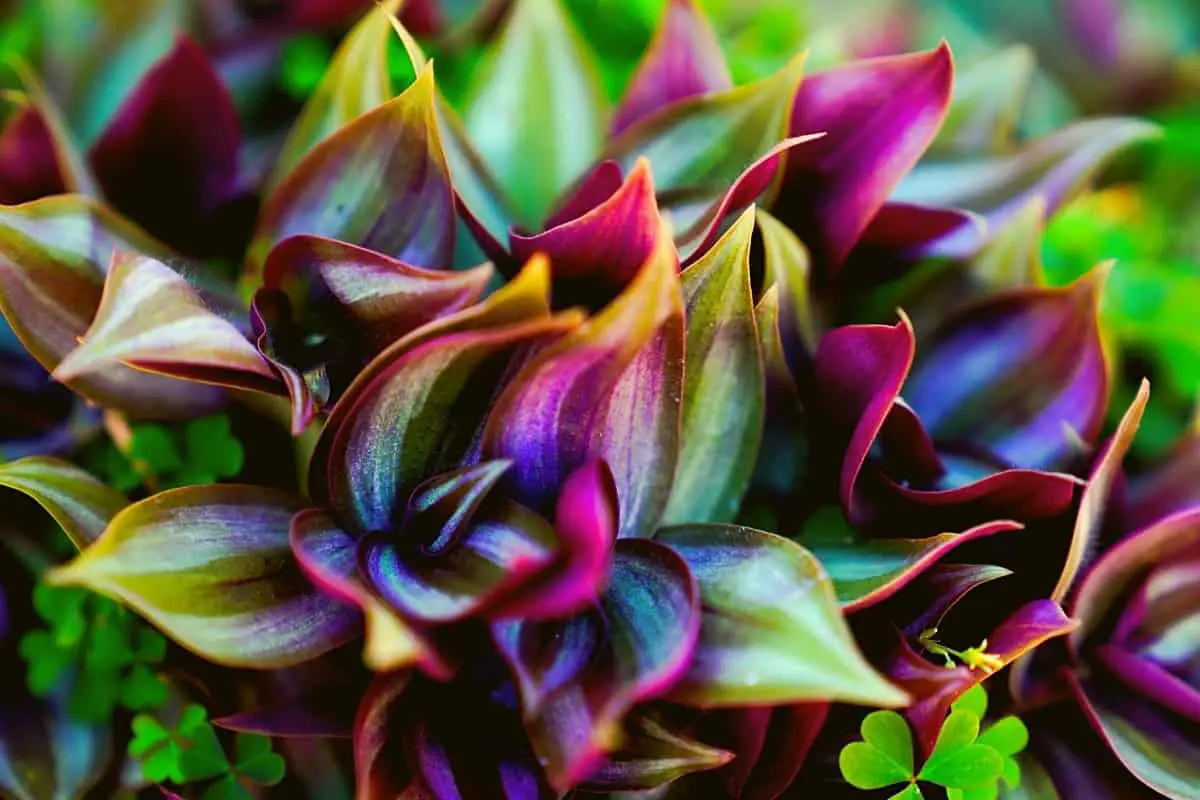
Table of Contents
Sharing is caring!
Last Updated on January 20, 2022 by
There are many types of wandering Jew that you can grow on your farm depending on your favorite type and how to grow it, and the care it needs.
Wandering Jew is a plant that has plenty of versatility. It comprises various species in the Tradescantia genus. This plant is adaptable to both outdoor and indoor conditions. It doesn’t matter if you plant it on hanging baskets, ground cover, or containers, it does so well.
Did you know you can grow your wandering Jew in the complete shade as well as full sunlight? In full sun, the plant looks more colorful whereas under the shade it leaves a greenish hue.
Wandering Jew Plant Care Tips For All Types
There are some important care tips you ought to follow to make sure your wandering Jew is thriving. Here are some of them
- Grow your wandering Jew in bright, indirect sun or expose it to full sun – it will thrive in both conditions. Keep in mind that low light fades the markings on leaves.
- Water the plant directly around roots. Do not water the crown as it results in root rot. This plant prefers slightly moist soil, so maintain the right watering schedule.
- Fertilize your plants with an all-purpose, water-soluble fertilizer at least once a month during the growing period.
Let’s Look At The Types Of Wandering Jews You Should Consider
Tradescantia zebrine.
This type is one of the best types of wandering Jews topping this list. Its leaves resemble the stripes of a Zebra hence the name. The purplish-green foliage comes with a silver outer edge and white stripes running down lengthwise. It grows to a height of 6-12 inches and can successfully grow as ground cover.
Tradescantia Fluminesis
This is a popular houseplant that can also grow as ground cover. It has white beautiful flowers that are triangular formed by three petals. It has a magnificent look attached to the fleshy stems with oval-shaped leaves that are deep green and glossy.
Tradescantia Pallida Type
This type can grow in hanging baskets and as a ground cover. Purple Heart as its commonly known is native to Mexico. Its deep foliage has light purplish-pink flowers that look awesomely good. This type is also popular with many gardeners.
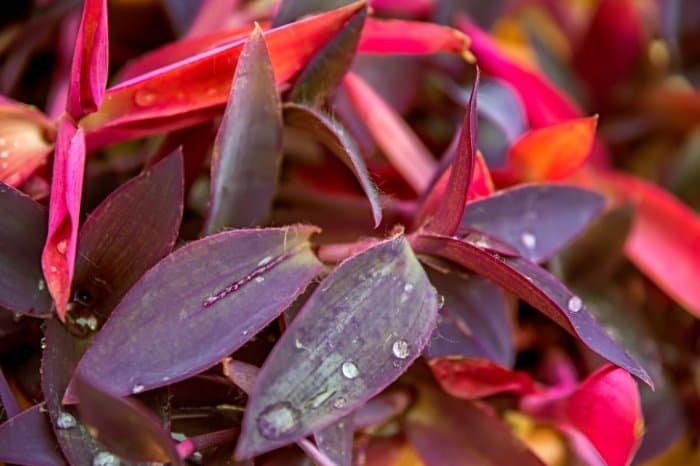
Tradescantia Blossfeldiana Type
This type is commonly known as the Inch Plant. Its thick green leaves have a fuzzy texture and a purple hue on the underside. You can easily grow this type from cuttings in both soil and water. It produces beautiful clusters of white flowers making it one of the best types of wandering Jew.
Tradescantia Spathacea
This type is also known as ‘Moses Basket, Boat Lily or Oyster Plant’. It is a sub-succulent herb from Guatemala, Southern Mexico, and Belize. It grows up to 6-12 inches long rosette and sword-like narrow spiral-shaped leaves. These dark-green leaves have purple bottom sides with white flowers with boat-like purple bracts.
Tradescantia Sillamontana
This type has beautiful foliage with geometric patterns. It grows from a thick succulent stem and the leaves are around 2 inches long covered entirely in white hair. Its magenta flowers bloom from the end of the stem during summer.
Osmocote Smart-Release Plant Food Plus Outdoor & Indoor, 8 lbs

Tradescantia Longipes
This plant produces purple-blue flowers that are three-petaled. This plant is native to Northern Arkansas to Southern Missouri from the family of Commelinaceae. Grow it in well-drained, moist, acidic soils. This type is one of the most popular types of wandering jew.
Tradescantia Navicularis
This type is known as Window’s Tears, Chain Plant, or Day flower. It is a creeping perennial succulent native to South America. This plant has the most beautiful narrow fleshy leaves that fold on opposite sides of the stem. It has bright lilac to magenta flowers that bloom in summer and lasts only a day. Like other types, this plant enjoys the indirect sun and well-drained soils . This type requires regular watering during the growing season
Tradescantia Fluminesis Variegata
This plant leaves range in shades of white to cream, to pale lemony white. The white parts won’t last long as they lack the ability to produce energy on their own. Simply remove them to allow new growth to take place. Remove the fully green parts that are close to the soil level to not take over the plant. This encourages the plant to keep looking its best.
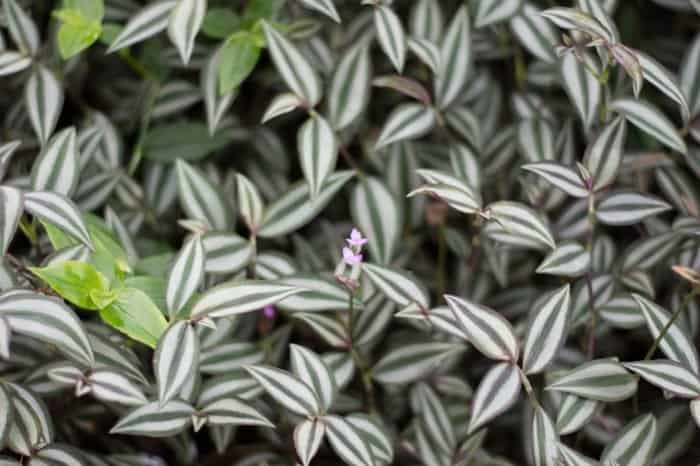
Where did the name wandering jew begin?
In the late 1800s, wandering Jew (Aegopodium podagraria) was a common name given to a species of perennial herb that was thought to have been introduced into Europe from North America. However, it is now believed that the plant probably originated in Eurasia, and was first found in Europe in the 19th century. The plant has since spread throughout the world as a garden escapee.
What is their scientific categorization?
They are all from the same family and genus. The species in this genus are all called Geranium. They have a flower that is shaped like a clover, and the flowers have five petals, and they are found all over the world. There are many different varieties of these plants, but they all look very similar.
Where do they come from?
Wandering Jews are a type of flowering plant in the genus Mimosa. The plant is native to the Americas and has been introduced to other areas around the world. In its natural environment it is found growing on the slopes of mountains, often near waterfalls.
How many types of wandering jews, or Tradescantia, are there?
Tradescantia is the common name for three species of plant, all of which are grown as ornamental plants. There are more than 20 different types of Tradescantia, ranging from the compact, bushy Tradescantia zebrina to the trailing Tradescantia coccinea. Tradescantia species grow well in many parts of the United States.
Tradescantia zebrina The common name for this species is “dwarf spiderwort” because its leaves look like small, web-like structures. In the summer, this plant produces many flower heads with a yellow center and a pale green ring of tiny flowers.
It grows in sandy or loamy soils in full sun. Tradescantia fluminensis This is one of the more common forms of Tradescantia, and is often found growing in moist areas. The leaves are dark green, and grow to be about 6 inches long.
The flowers are small and pale yellow. The flower is also a favorite of hummingbirds. Tradescantia fluminensis has been cultivated for hundreds of years.
Having learned of all these types of wandering jew, you have a variety to chose from and opt for what to grow. These flowers are beautiful additions to your home or your garden. Their colored leaves and their bloom are amazingly beautiful and outstanding.

Car oline is a gard ener who loves to get down to the n itty – gr itty of gardening . She proudly proclaim s herself as a ‘ d irt worsh ipper ‘ and can often be found deep in the garden , covered in soil and singing to her plants . As a self – proclaimed ‘ plant whis pe rer ‘, Caroline believes that plants need love and attention just like any other living thing , and she loves to give them both . When she ‘s not tending to her garden , you can often find her researching the latest gardening trends , or teaching others how to make their gardens thrive
Grow. Play. Every Day!

- House & Home
- Houseplants

Wandering Jew Care: How to Grow a Long and Luscious Inch Plant (Tradescantia Zebrina)
Tradescantia zebrina (commonly known as wandering Jew, spiderwort, or inch plant) is popular for a reason: This beginner-friendly houseplant is low-maintenance and grows quickly. It’s also super easy to propagate more plants so you can fill your home with more of the colorful striped foliage the species is known for.
Written by Linda Ly

When it comes to vigorous, colorful, and easy-to-grow hanging houseplants, there aren’t many that can compare to Tradescantia zebrina (known more commonly as wandering Jew—and I’ll touch on the history of that name below). Whether you’re a houseplant beginner or a veteran, most indoor gardeners have owned one of these potted plants at some point.
Keep reading for everything you need to know about Tradescantia zebrina and growing this stunning houseplant in your own home.
Disclosure: If you shop from my article or make a purchase through one of my links, I may receive commissions on some of the products I recommend.

About inch plants
Natural habitat.
Tradescantia zebrina is a native of Central and South America, from Mexico down to Colombia, as well as the Caribbean. Here, it forms part of the undergrowth in lightly forested and often very moist areas. It can form very dense, wide mats thanks to its creeping growth pattern and ability to throw roots extremely quickly.
Unfortunately, its vigorous growth has also made Tradescantia zebrina an invasive plant in some regions. This includes Hawaii, Brazil, and Australia, where the species easily takes hold in moist, forested areas.
As a 2019 study carried out in the Brazilian Atlantic Rainforest notes, this is problematic due to the species choking out native plants.
Some of the above was caused by careless gardeners allowing bits of the plant to get into the wild, where they quickly root. If you’d like to grow spiderworts like this one in your garden, please make sure to dispose properly of any trimmings left after pruning!
This also applies to zebrina’s popular cousins, like Tradescantia fluminensis, T. pallida, and T. spathacea.
Description
It’s not difficult to see why Tradescantia zebrina gained popularity as a houseplant. Wandering spiderwort plants (not to be confused with spider plants , another beginner-friendly species) are low-maintenance and grow just about anywhere—they even just grow in water !
Easy care and quick growth aside, spiderworts are also just good-looking plants. The pointed, oval leaves on thin, fleshy stems overlap slightly and are characterized by their zebra pattern in purple and silvery green. The leaf undersides are deep purple in color and the tiny, three-petaled flowers are bright pink.
Although this species is naturally a creeping plant, it’s often grown indoors in hanging planters. As long as the plant is provided with enough light, the foliage will be very dense and brightly colored, forming a spectacular waterfall that can reach more than 3 feet in length.
What’s in a name? In the case of common houseplants, sometimes a lot.
Tradescantia zebrina is a classic houseplant (I found mention of it in a 1964 German book about houseplants, but it’s probably been around longer than that!) and among most English speakers, it has long been known as wandering Jew. This is probably a reference to the “wandering” nature of the plant, as it does have a creeping growth pattern.
The legend of the wandering Jew is hundreds of years old and is now commonly considered to be rooted in antisemitism. It describes a Jewish man cursed to walk the planet until the Second Coming because he taunted Jesus on his way to the cross.
Because of this, the plant name has partly fallen out of fashion and has been the source of much debate in the plant world over the past few years.
Some plant enthusiasts have embraced the alternative “wandering dude,” which I personally think is a great option.
“Inch plant” (houseplant enthusiasts don’t agree on whether this refers to the fact that it can grow an inch a day, or that you only need an inch of stem to propagate it), “spiderwort,” or “wandering spiderwort” are also popular alternatives, though these are common names for other Tradescantia varieties, such as Tradescantia Nanouk.
The best way to avoid any confusion is to just stick to the scientific name.

Inch plant varieties
There are three subspecies of inch plant (wandering Jew): Tradescantia zebrina var. zebrina, var. flocculosa, and var. mollipila. Unsurprisingly, after it having been a popular houseplant for so many years, nurseries have also managed to create a whole bunch of cultivars through selective cultivation.
A few of the popular Tradescantia zebrina cultivars you may come across in your local plant store include, but are certainly not limited to:
- Tradescantia zebrina ‘Quadricolor’: Yep, as the name suggests, this one adds an extra color to the mix. The leaves are cream, pink-purple, light green, and dark green.
- Tradescantia zebrina ‘Burgundy’: Characterized by its very dark purple coloration.
- Tradescantia zebrina ‘Silver Plus’: Less purple, more shiny silver.
- Tradescantia zebrina ‘Red Gem’: Less silver, more intense (light) purple.
- Tradescantia zebrina ‘Purple Joy’: Less silver, more dark purple.
- Tradescantia zebrina ‘Tikal’: A rare, naturally occurring variety that collectors pay a pretty penny for.
Do keep in mind that most of these cultivars aren’t patented and the amount of mislabeling and variation within a cultivar are both huge. Just growing your wandering Jew in lower-light conditions can completely change the way it looks, so it’s not surprising that confusion sometimes reigns supreme.
Luckily, care is the same across all cultivars, so your best bet is to just enjoy your plant even if you’re not sure what Tradescantia variety you’re dealing with!
Where to buy wandering Jew plants:
- California Tropicals
- Daylily Nursery
- The Green Escape

Caring for an inch plant
Light and temperature.
It’s important to provide your Tradescantia zebrina with enough light. It’s tempting to use plants to brighten up dark, shaded spots in your home, but that just doesn’t work with this one: It loses its dense growth pattern and beautiful coloration in low light.
To prevent your wandering dude plant from growing sparse and green, place it near a window that gets bright indirect light. Some full sun isn’t a problem either, but do make sure you acclimate it gradually to a higher light location.
Temperature-wise, this species is a lot hardier than many of the tender tropicals we like to grow in our homes (like Anthurium andraeanum and Begonia maculata ).
Wandering dude plants can handle a very wide range of temps, making it perfect for those chillier windowsills that your other plants may not appreciate. Room temperature is ideal, but anything between 50°F to 85°F will keep them happy.
Water and humidity
Your Tradescantia zebrina will appreciate lightly moist soil. You can water a bit more during the summer months, when the plant is actively growing and needs a lot of moisture, and less during winter, when soil tends to take significantly longer to dry.
If you’re not sure whether it’s time to water your wandering Jew plant yet, you can always turn to the age-old trick of sticking a finger in the soil.
- If it still feels damp, wait a little longer, until the first inch or two has dried.
- If it feels bone dry, you’ve waited too long; you may also see limp leaves on your plant at this point. It’ll bounce back, but not always without lasting damage.
- If the soil feels wet, you watered too much and need to keep an eye out for root rot.
As for humidity, given its rather wet natural habitat, wandering Jew does appreciate higher air moisture levels. The great thing is, though, that it doesn’t demand it. As long as you keep its soil lightly moist and the air isn’t extremely dry, your plant should do well.
Soil and planting
Wandering Jew is not fussy about its potting mixture at all. I’ve grown it in pure houseplant potting soil with no additives. If you do want to take things to the next level, you can add some perlite and/or peat moss, although this is really not a must.
Most houseplant enthusiasts like to place their wandering Jew in a hanging planter so they can enjoy the look of the leaves cascading down. This is not a must, though. You can also emphasize the species’ creeping growth habit by filling up a large, shallow planter, growing it in a terrarium, or even keeping it in water on a semi-permanent basis.
Recommended products for wandering Jew plant care:
- FoxFarm Ocean Forest Potting Soil
- Espoma Organic Potting Mix
- Perfect Plants Organic Perlite
Fertilizing
Like most other houseplants, Tradescantia zebrina appreciates a bit of fertilizer during the growing season, which extends from spring to early fall. You can use a normal houseplant fertilizer according to the instructions on the bottle.
Don’t fertilize during the winter months unless your plant is growing well. It doesn’t need extra nutrients if it’s inactive.
Recommended fertilizers for wandering Jew plants:
- Houseplant Resource Center Liquid Fertilizer for Houseplants
- Instant Biologics Instant Plant Food (Fizzing Nutrient Tablets)
- Maxsea All-Purpose Seaweed Plant Food
Pruning
There’s a good chance you’ll have to prune your Tradescantia zebrina regularly, because as I mentioned, this is a very quick grower. It also roots very easily, so any trimmings can be replanted! I’ll describe how to do this in the section on propagation below.
Aside from stem trimming, you can remove any dead leaves, which are bound to pop up from time to time in very dense plants like this species.
Dividing or repotting
Inch plants don’t grow by producing plantlets at their base like many other houseplants (such as spider plants ) do. Instead, inch plants spread by rooting along the stems.
This means that division is not really the way to go; keeping these plants manageable is usually done through pruning. You can shape your plant by pinching off any long, leggy stems to create a fuller appearance and control its spread.
You’ll notice that Tradescantia really doesn’t mind being a bit cramped in its planter. Still, it’s a good idea to provide your plant with some fresh soil every year or two by repotting it.

Propagating an inch plant
If you’ve never propagated a houseplant before, this is truly one of the best species to start with. It’s known for rooting extremely quickly in both water and soil, meaning it’s easy to fill endless planters to keep or give away.
All you need to propagate your Tradescantia zebrina is a pair of clean scissors. Here’s how you do it:
- Snip the ends off existing branches. An inch or two with a few leaves works best.
- Remove the leaves at the bottom so part of the stem is exposed.
- Place the cutting in a glass of water to root or plant it directly in soil. You can put cuttings back in the mother plant’s pot to give her a fuller appearance on top.
- It can take a little longer during the winter months, but the first roots should appear within a week or so. You can give soil cuttings a slight tug to verify they’ve rooted.
- Once the first signs of new foliage appear, you’ll know your propagation attempt has been a success!
- If you propagated in water, you can leave the rooted cuttings in water almost indefinitely, although you can also pot them up in fresh soil.

Common questions about inch plant care
How do i make a wandering jew plant bushy.
By their very nature, wandering Jew plants are not bushy. Their creeping growth habit means they naturally grow leggy over time, especially in containers.
However, you can mimic a fuller appearance by strategically pinching off any long, spindly stems to shape the plant more. These stems can also be replanted near the mother plant.
As the baby plants grow, they’ll help fill in sparse areas and create the illusion of a bushy wandering Jew.
How long do wandering Jew plants live?
Wandering Jew plants have a limited lifespan of just a few years, and as a potted plant, you’ll notice your wandering Jew becoming very leggy after just two to three years.
Unlike other fast-growing plants that benefit from pruning, cutting back a wandering Jew doesn’t work well to renew its growth; it simply controls the spread.
The best way to keep your plant coming back year after year is to propagate new plants from stem cuttings, which—fortunately—is super easy with a high success rate.
Is wandering Jew perennial?
Wandering Jew (Tradescantia zebrina) is a trailing evergreen perennial in its native habitat (USDA hardiness zones 9 through 12). Where it’s not winter hardy, wandering Jew is grown year-round as a houseplant.
Are wandering Jew plants toxic to cats and dogs?
Wandering Jew is not considered outright toxic, but it can cause some skin irritation. If your pet gets into your plant, don’t worry too much, although it can be a good idea to have a look in its mouth to make sure there’s no excessive swelling. Be sure to offer water. To prevent skin rash, it can be a good idea to wear gloves if you need to handle your wandering Jew plant. This especially applies if you have sensitive skin.
https://www.cabi.org/isc/datasheet/110354
Racism in Taxonomy: What’s in a Name?
Chiba de Castro, W. A., Xavier, R. O., Garrido, F. H., Romero, J. H., Peres, C. K., & da Luz, R. C. (2019). Fraying around the edges: negative effects of the invasive Tradescantia zebrina Hort. ex Bosse (Commelinaceae) on tree regeneration in the Atlantic Forest under different competitive and environmental conditions. Journal of Plant Ecology, 12(4), 713-721.
Encke, F. (1964). Pflanzen fur Zimmer und Balkon; Auswahl, Pflege, Vermehrung.
I'm a plant lover, passionate road-tripper, and cookbook author whose expert advice and bestselling books have been featured in Time, Outside, HGTV, and Food & Wine. The National Parks Cookbook is my latest book. Garden Betty is where I write about modern homesteading, farm-to-table cooking, and outdoor adventuring—all that encompass a life well-lived outdoors. After all, the secret to a good life is... Read more »
We bought a full grown Bolivian Jewel mid summer last year. It was in a 14” raised pot and flowing 2 foot over the sides. It was beautiful next to our fountain outside. We live in Minnesota so we had to discard it in the late fall since we had no place to care for it in the house. Since we can’t find another like it we’d like to plant one from scratch but how. We still have the pot and riser but have no idea how to start from that. One plant, a few or just how many to make a bushy over grown plant so it looks like the one we purchased last year. Does this make sense or should we just forget it since it is already the middle of May. The greenhouse that we bought it from last summer doesn’t have any this year, just small ones in 4” pots. Thanks
If you can only grow it as an annual (and won’t be overwintering it indoors), you can plant a few smaller ones together to make them look fuller as they grow.
It seems counterproductive to talk about the problematic origin of the name wandering Jew, recommend multiple alternative names (including scientific), but then continue to call it wandering Jew in the rest of the article. If the name is anti-Semitic just set a good example and use a different name.
Leave a Reply Cancel reply
Your email address will not be published. All fields are required.
Save my name and email in this browser for the next time I comment.
This site uses Akismet to reduce spam. Learn how your comment data is processed .
Recommended Reads
- Garden of eatin’

The No-Dig Garden Method: Make Amazing Soil With Less Work

Solarizing Your Garden: How to Use the Sun to Control Weeds and Pests in the Soil

How to Plant a Three Sisters Garden: The Original Companion Plants

How Much to Plant for a Year’s Worth of Food

What You Should Know Before Buying Land (My Real-Life Tips)

Construction Loans: What I Wish I’d Known As a First-Time Borrower

Dark Room? 9 Actually Low-Light Plants That Don’t Need a Lot of Sun

Getting Rid of Fungus Gnats: 11 Remedies That Really Work

My Favorite Ruby Red Sauerkraut Recipe (and Why It’s So Good For You)

How to Make Nukadoko (Fermented Rice Bran Bed) for Pickling

Easy 4-Ingredient Colorful Homemade Pasta—No Pasta Maker Needed

The Best Homemade Limoncello
Want to level up your garden this year.
Sign up for my free, never-boring newsletter and every week you’ll get the game-changing emails you wish you would’ve had sooner.
- About Linda Ly
- What’s In My Garden
- Lazy Gardening Academy
- Sponsorships
- Site Policies

Back to the top
Disclosure: Garden Betty independently selects products to feature on this site. I may receive a commission when you buy something through one of my links. As an Amazon Associate, I earn from qualifying purchases.
© 2024 Garden Betty. All Rights Reserved.


Tradescantia Types: Wandering Jew Varieties

Table of Contents
- 1 Quick Facts About Wandering Jew Plants
- 2.1 Tradescantia Blossfeldiana (or Tradescantia Cerinthoides)
- 2.2 Tradescantia Albiflora
- 2.3 Tradescantia Fluminensis
- 2.4 Tradescantia Ohiensis
- 2.5 Tradescantia Pallida (Tradescantia Purpurea)
- 2.6 Tradescantia Spathacea
- 2.7 Tradescantia Sillamontana (or Tradescantia Pexata)
- 2.8 Tradescantia Virginiana
- 2.9 Tradescantia Zebrina (or Tradescantia Pendula)
- 3.1 How do I care for my Tradescantia?
- 3.2 Does Tradescantia like the full sun?
- 3.3 Can Tradescantia Plants Survive Cold Weather?
- 3.4 How often do you water a Tradescantia?
- 3.5 How do you grow Tradescantia in water?
- 4 Conclusion: Tradescantia Plants
- 5 References
The Wandering Jew plant varieties are popular among other houseplants, though they can also be grown outdoors.
They come from the Commelinaceae family and are part of the Tradescantia genus, with 75 different perennial plant species.
They are native to North, Latin, and South America, growing naturally in tropical environments.
Also called the inch plant, flowering inch plant, or spiderwort, wandering Jew plants are herbaceous perennial plants; however, certain varieties are considered invasive in some countries.
Some varieties are not natural and have been created through selective planting.
This has produced rare types and unusual variations like the variegated albiflora that range from light green to white to deep purple and pale white.
They are called inch plants because they grow and creep, inch by inch, along the ground.
They have multiple colored heart-shaped leaves and grow in a zigzag pattern, so it seems like the stems and leaves are “wandering all over.”
For other related posts on other houseplants, please see our page on other types of houseplants to grow.
Related post on caring for Tradescantia plants:
- How to Care for Wandering Jew Plants
- Wandering Jew Plant Toxicity: Is Wandering Jew Plants Poisonous to Cats?
- How To Propagate Wandering Jew Plants
- How to Grow Wandering Jew Plant Outside as Ground Cover
Quick Facts About Wandering Jew Plants
- Common names: purple queen, inch plant, flowering inch plant, purple secretia, purple-heart
- Most common varieites: Tradescantia pallida, Tradescantia zebrina, Tradescantia fluminensis
- Zone: 9 to 11
- Origin: Mexico
- Height: Can grow up to 6 feet
- Watering Needs: Medium watering
- Light: Bright and Indirect Sunlight, Shade to Partial Sun
- Soil: Slightly moist
Wandering Jews are vine plants that either cascade or spread over ground cover in nature.
Anyone from green thumbs to black thumbs can safely plant these perennials in their gardens or pots indoors as they are hardy, low-maintenance plants.
Thriving in warmer climates in the U.S., it’s best to plant your spiderwort in temperatures that range between 60-80℉.
If planted in your garden, you should ideally live in a USDA plant hardiness zone of 9-11, where your climate is moderately warm and humid.
These plants don’t do well in cold and freezing winters because most grow natively in tropical climates.
There are different species of the inch plant, and their care requirements are similar, but there are also differences worth knowing about.
Wandering Jew Varieties (Tradescantia Types)
Let’s have a look at the nine different types of spiderwort plants:
Tradescantia Blossfeldiana (or Tradescantia Cerinthoides)

Varieties of Blossfeldiana:
- Red hill
These varieties, originally from Argentina, are one of the few flowering plants on this list. They are popularly called flowering-inch plants.
They are creeping or ascending perennial indoor plants and boast short stems with lance-shaped leaves that are glossy and fleshy.
Most interestingly are the underside of these leaves: they are purple!
The flowers start blooming from March to July, and they form clusters with three triangular petals.
The red hill variety is also called the spider lily or oyster plant. Its flowers are purple, blue, white, or rose pink.
The lilac Tradescantia blossfeldiana’s foliage is striped and grows in green, lilac-pink, and white shades.
What’s unique about these two perennials is that they are great air purifiers and can be grown indoors or outdoors.
In addition, they make excellent and pretty ground covers outside, and as a houseplant, you can grow them in hanging baskets.
Both need indirect sun and regular watering to flourish.
Tradescantia Albiflora

Varieties of Albiflora:
- Tradescantia albiflora ‘Variegata’
- Tradescantia albiflora ‘Tricolor’
- Tradescantia albiflora ‘Nanouk’
The albiflora has a pale to a bright green and white striped leaf that is elongated in shape.
The white stripes are dependent on the lighting quality where you grow the plant.
All variegated albiflora plants require special attention and bright light conditions to ensure they retain their striped appearance.
If the plant is in an ideal lighting setting, you can expect lush growth and leaves that alternate between pale and white to luminous green.
This can produce some plants’ tricolor appearance by creating pale white, light green, and striped leaves on one plant.
The nanouk variety is an excellent addition to other houseplants. It has light green with olive green and purple-toned leaves.
While the nanouk is not an original albiflora and was developed through particular breeding, it is a stunning addition to any home.
If your plant has a pest infestation of spider mites, shower it with fresh water. Next, apply a pest spray that contains Neem oil.
Alternatively, you can make your spider mites solution of half rubbing alcohol and half water.
Do this multiple times until you get rid of the spider mites and eggs.
Ensure all albiflora enjoy bright indirect light, sufficient water, and half-strength fertilizer, and they will thrive.
They also enjoy a humid environment, so you can mist the plant to provide the extra moisture.
Read further about Tradescantia Nanouk plants:
- Tradescantia albiflora ‘Nanouk’ Plant Care
Tradescantia Fluminensis

Varieties of Tradescantia Fluminenis:
Also known as the small-leaf spiderwort, the fluminensis is a South American perennial herb.
It is multi-functional and can be planted indoors, in pots, and outdoors as a creeping groundcover.
Fluminensis is an easy keeper and handles full sun (but not too much sun), little water, and negligent care.
Stems are crowned with shiny oval-shaped leaves and the tips of stems flower with small clusters of white flowers.
The variegata plant’s leaves come in various colors, from pale yellow and cream to different shades of white.
However, the white leaves won’t stay white for long as they will gain more pigmentation.
Remove the entire white leaves to allow the other variegated patterns to grow, and also immediately remove the whole green leaves.
Allowing your variegata to grow with whole green leaves means that these leaves can take over the plant, and you won’t have your variety of leaves.
The lavender spiderwort comes in pretty lavender, but if you allow this plant to grow in low light, it will grow green leaves.
The herb produces fruits that yield a three-chambered seed pod.
For more information on Tradescantia Fluminenis plants, read more:
- Tradescantia Fluminensis: The Tricolor Wandering Jew Plant
Tradescantia Ohiensis

The Ohio spiderwort, also called bluejacket, belongs in the wandering Jew family; however, it doesn’t seem so from its appearance.
This plant’s leaves resemble grass because they are arching and long and form up to eight nodes, which form a groove or channel.
The leaves are commonly a dark bluish-green
Its three-petaled flowers are purple-blue flowers that grow in clumps and clusters at the top of the stem and generally bloom from May to early July.
Like the Virginiana wandering Jew, they close at midday due to the heat and shrivel up, becoming a jelly-like fluid.
It is native to Missouri and eastern and central North America and can grow up to 2-3 feet in height, and its foliage spread can grow to be 2.5 feet.
While it is drought-tolerant, the perennial prefers moist soil, but make sure it is well-draining soil and provides full sun with some shade or filtered light.
Tradescantia Pallida (Tradescantia Purpurea)

Varieties of Tradescantia Pallida:
- Purple Heart
The purple heart, or purple queen, variety is iconic among the spiderwort family. This popular outdoor groundcover is native to the rugged landscape of Mexico.
The leaves are narrow with pointed tips, and each deep purple leaf is mounted on a long stem.
Pink to pink-white flowers have three petals, and they bloom where two leaves meet at the ends of the stems, creating a crown effect.
There are no seeds or fruits since this hardy plant reproduces with leaf, stem, or root cuttings.
You will find this variety as garden plants because they are great for ground cover.
For more information on Tradescantia Pallida plants, read more:
- Tradescantia Pallida: Caring for a Purple Heart Wandering Jew Plant
Tradescantia Spathacea

Other names of Tradescantia Spathacea:
- Oyster plant
- Rhoeo Oyster
- Moses in a Basket
From southern Mexico, the Spathacea is a sub-succulent plant, ideal for indoor or outdoor planting.
It is popular due to its lush foliage that is light reflecting at dusk.
The leaves are purple-bottomed, and they grow in a spiral manner from a central point, where a tall rosette is formed.
The upper surfaces of the leaves are striped green and white.
The small white flower is rooted at the base of the leaves. The spathacea is easy to grow, making it a popular house plant.
For more information on Tradescantia Spathacea plants, read more:
- Tradescantia Spathacea (Oyster Plant) Plant Care
Tradescantia Sillamontana (or Tradescantia Pexata)

Varieties of Sillamontana:
- White Velvet Wandering Jew Plant
- Cobweb Spiderwort
This variety has some interesting common names, including the hairy wandering Jew and the white velvet.
The fuzzy leaves of the Tradescantia sillamontana are round-shaped, thickly padded into typical succulent slices that are covered with a protective layer of silvery hair.
This creates an ornamental plant that contrasts its hairy leaves with soft magenta-pink flowers.
In summer, blooms appear among the leaves at the stem tips.
The Sillamontana is an excellent groundcover in warmer climates with mild winters, and it roots well among shady trees, though it can withstand full sunlight.
As such, morning sun is best. Ensure the ground is kept moist and damp to promote good growth.
For more information on Tradescantia Sillamontana plants, read more about them:
- Tradescantia Sillamontana (White Velvet) Plant Care
Tradescantia Virginiana

Also known as the common spiderwort or spider lily. The Tradescantia virginiana is native to the eastern parts of North America.
This herbaceous perennial grows to be 3 feet tall. The narrow leaves are lance-shaped and pointed.
They are also a bright, dark green with parallel veins that you can see. All along the stem, the leaves grow densely.
Their flowers have three petals in blue or violet purple that grow up to 2 inches across.
The flowers only open in the morning, and once they are open, you can see the yellow stamens that form in a terminal cluster.
The flowers close by mid-day, and after the flowering season ends in July, they wilt. The three-petaled flowers become a jelly-like fluid after flowering.
This wandering jew variety also needs moist but well-draining soil to grow. It also grows best when there is full or partial shade.
For more information on Tradescantia Virginiana plants, read more about them:
- Tradescantia Virginiana: Virginia Spiderwort Plant Care
Tradescantia Zebrina (or Tradescantia Pendula)

Varieties of Zebrina Pendula:
- Silver Plus
The Tradescantia zebrina, also called the purple zebrina, is native to Mexico and Guatemala. As a popular trailing houseplant, it grows fast.
If you don’t have much luck getting plants to grow, this one will be your best friend.
It is drought, heat, exposure, and humidity-resistant and adapts well to most environments.
With either drooping or creeping stems, the ovate leaves also have two longitudinal stripes, and the lower leaf surface is magenta.
The burgundy zebrina has dark purple leaves with lighter purple or burgundy stripes.
The silver plus zebrina variety, also known as the silver banded inch plant, has blue-green leaves, and its stripes are silver.
The leaf color of the red gem depends on how much sunlight it gets, but in general, it has vibrant red leaves.
It needs moist, well-draining soil, partial shade or filtered light, and regular water for optimal growth.
Further reading: How to Care for a Tradescantia Zebrina Plant
How do I care for my Tradescantia?
As evergreen herbaceous plants, your Tradescantia family of plants grow best in temperature of 60-80℉. They are not frost-hardy, so if you live in colder climates, it’s best to keep your plants indoors. Other best care tips include using an all-purpose soil mixed with a moisture retainer and ensuring they get indirect light and water.
Does Tradescantia like the full sun?
Your wandering Jew plant likes bright light and a good amount of it, too, as well as partial shade. If your plant gets insufficient light, then the markings on its leaves will fade. Direct sunlight isn’t ideal as it can burn the plant leaves. Only the purple queen Tradescantia loves full sun.
Can Tradescantia Plants Survive Cold Weather?
Wandering Jew plants can endure cold temperatures for brief periods of time, but if the situation persists for an extended amount of time, the plants will begin to die. It is important to exercise caution when temperatures fall between 45 and 50 degrees Fahrenheit throughout the winter months. A covered area such as a greenhouse or cold frame is a good idea to keep the temperature around your plants above 50 degrees Fahrenheit.
How often do you water a Tradescantia?
Tradescantia thrives in damp environments. Never allow your plants to get very dry, particularly during the winter. A consistent watering regimen is the most effective way to keep the soil properly hydrated. Water until the water seeps through the bottom of the container, taking care to ensure that your plant does not remain in the water for an extended period.
How do you grow Tradescantia in water?
Tradescantia is one of the easiest houseplants to propagate, and it’s an excellent option for water propagation techniques. Water propagation is essentially nothing more than removing a piece of a stem cutting or leaf-cutting and placing it in a container of water; it is best done in a clear container so that the roots can be observed as they develop.
Conclusion: Tradescantia Plants
The Tradescantia has many lovely wandering Jew varieties: Tradescantia albiflora, Tradescantia virginiana, Tradescantia spathacea, Tradescantia zebrina, and more are being created with new cultivation and cross-propagation methods.
Soon, entirely new types and colors of spiderworts will grace our homes.
Keeping the spiderwort family in your home is not difficult.
Most of the plants in the genus are hardy and environmentally resilient enough to cope in dry places like Mexico and South America.
With some elementary fertilizing and potting, you can quickly grow your spiderwort plants at home. You can prune them back in the early fall.
Vegetative root cuttings are even available online for growing your own Tradescantia spathacea or Tradescantia sillamontana.
Remember, it’ll take a few weeks for the root cuttings to develop fully.
From bushy spiraling growths to lean vine formations and bright pink flowers growing on the ends of leaves, you can also create a masterpiece with clusters of white flowers that grow along the stems and between the leaves.
The spiderwort can make anyone seem like a master gardener by keeping a few variegated plants in their home, stunning visitors with a few tricolors, or a gray beard Jew ground cover at the front door.
- Mahr, S. (n.d.). Tradescantia zebrina . University of Wisconsin-Madison, Wisconsin Horticulture, Division of Extension. URL: https://hort.extension.wisc.edu/articles/tradescantia-zebrina/
- Cooperative Extension Service. (2016). Plant of the Week: Tradescantia pallida, Purple Heart . University of Arkansas System Division of Agriculture, Agricultural Experiment Station. URL: https://www.uaex.uada.edu/yard-garden/resource-library/plant-week/Tradescantia-pallida-Purple-Heart-10-21-2016.aspx
- Reznicek, A., Voss, E., & Walters, B. (2011). Tradescantia virginiana L. Michigan Flora Online. University of Michigan. URL: https://michiganflora.net/species.aspx?id=826
- Hawke, R. (2010). A Comparative Study of Tradescantia Cultivars . Chicago Botanic Garden, Plant Evaluation Notes , Issue 34. URL: https://www.chicagobotanic.org/downloads/planteval_notes/no34_tradescantia.pdf
- U.S. Department of Agriculture. (n.d.). USDA Plant Hardiness Zone Map. URL: https://planthardiness.ars.usda.gov/
- About/mentions: Tradescantia , houseplants , gardening
Lindsey Hyland grew up in Arizona where she studied at the University of Arizona’s Controlled Environment Agriculture Center. She continued her gardening education by working on organic farms in both rural and urban settings. She started UrbanOrganicYield.com to share gardening tips and tactics. She’s happy to talk about succulents and houseplants or vegetables and herbs – or just about anything in a backyard garden or hydroponics garden.
Leave a Comment Cancel reply
This site uses Akismet to reduce spam. Learn how your comment data is processed .
Copyright © UrbanOrganicYield.com 2017-2024
Wandering Jew: Types, Care, and Propagation
Table of contents, • the wandering jew - an introduction.

Wandering Jew, also called the Inch plant, can be credited for starting the whole trend of plant swapping. Years before indoor plant gardening became a profitable business, friends, family, and fellow plant parents swapped cuttings of the Wandering Jew.
The Wandering Jew is native to tropical and temperate climates and grows vigorously with very little care. In fact, the name Wandering Jew comes from the fact that if the plant is left to its devices in the open, the plant will grow invasively to wander the ends of the earth.
Tradescantia Zebrina, earlier known as Zebrina Pendula, is a species of creeper loved across the globe for its bright purple foliage. When grown indoors in planters, the tradescantia can be grown all year round in home gardens, even by gardeners who have no real gardening experience.
☆ Common names
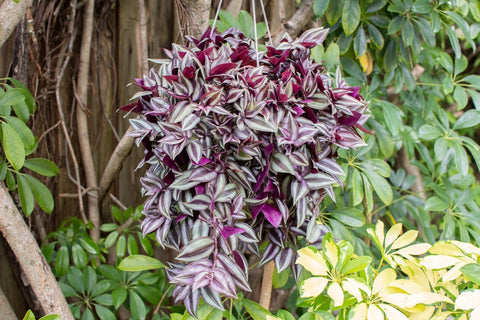
Inch plant, Spiderwort, Wandering jew, Wandering zebrina, Zebra plant
• Types of Inch Plants
This beautiful plant has over 70 popular varieties and more often than not you can find most of these varieties in your neighborhood growing with abandon in either hanging plants or as ground cover. Some of the most common tradescantia varieties are:
1. Tradescantia Fluminensis
This variety has fleshy ovate leaves with white and green variegations attached to fleshy stems. It has triangular white flowers with three petals.
2. Tradescantia Zebrina

The variegated leaves resemble the stripes of a zebra, the purplish-green leaves have a silver edge. One of the hardiest and quickest growing wandering jew varieties.
3. Tradescantia Pallida
Also famous as the Purple heart plant for its deep purple foliage and light purplish-pink flower. It stands out amazingly both as ground cover and as hanging plants. Tradescantia blossfeldiana: The thick green leaves have a fuzzy texture with a white and green variegated upper side and a purple underside. The plant has clusters of beautiful blue, purple, white, and pink flowers.
4. Tradescantia Sillamontana
This plant has beautiful symmetry with leaves growing on thick succulent-like stems covered in white fuzzy hair. It produces magenta flowers in season.
5. Tradescantia Spathacea

Also famous as ‘moses in a blanket’, ‘oyster plant’, or ‘boat lily’, it's almost succulent like in nature. It has dark green leaves with purple underside growing in spiral patterns
• Wandering Jew (Tradescantia) P lant Care
The Wandering Jew plant is easy to grow in Indian climates and can add beautiful color to any home garden. A great plant for new plant parents, it is a joy to grow. Let’s take a look at the detailed guide for creeping inch plant care. Spiderwort plants are mostly carefree. One of the only points of contention in growing this as a houseplant is getting the right moisture level.
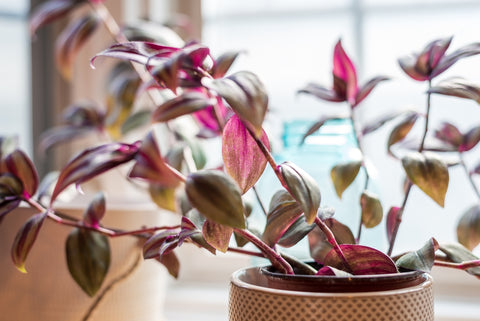
The creeping-Inch plants love bright indirect light but also do great with a few hours of direct light. Plant your wandering jew plant near a south-facing window where it can get at least 6 to 7 hours of bright indirect light. Growing your spiderwort in North-facing balconies and terraces is also a good idea. If the colour or variegations on the leaves start to diminish then it is a clear sign of low light. Shift your plant to an area with brighter light conditions.

The wandering jew plant likes its potting mix to be kept uniformly moist at all times but not soggy at all. Under indirect light conditions, water your wandering jew plant once per week or when the top soil dries out. Don't let the soil dry out completely.
However, when watering your dried potting mix, water it in batches to ensure that the soil absorbs all the water and it just doesn’t run out of the planter. Water a little and then wait for a while for the soil to soak up the water before watering it again till it drains out of the drainage hole at the bottom of the planter.
The creeping inch plant is not very finicky about the soil it grows in. It thrives in a well-draining but rich potting mix. The key points to be kept in mind is allowing the topsoil to dry in between waterings and also aerate the soil once in a while. Since the spiderwort plant loves moist potting mix, it is very important that it is well-draining and well-aerated so root rot can be avoided.
4. Fertilizers

Use a well-balanced and generic houseplant fertilizer for your wandering jew plant. They are not heavy feeders and do well with both root and foliar application every 15 days. Use a good quality fertilizer like the Ugaoo Plant Tonic for this. Dilute the fertilizer as instructed and apply directly to roots once in 15 days and put it in a misting spray and do a foliar application too once in 15 days. The foliar application guarantees bigger and showier leaves. However, don't overfeed the plant as it causes the leaves to lose their variegations.
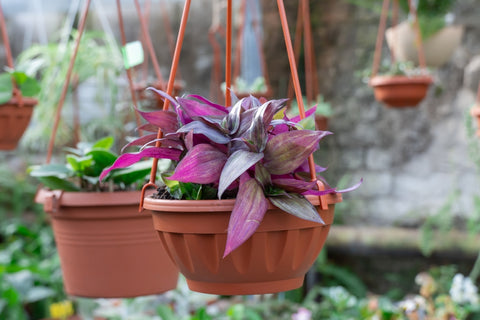
The Spiderwort plant does not require any pruning as such. Pruning for the creeping inch plant comes into play in two instances; one is to remove dead foliage and the other is to manage the shape and growth pattern of the plant. When left to its own devices, the spiderwort plant becomes leggy, to keep your plant fuller, prune the stems from time to time or pinch back at least one-fourth of the branch length.
Simply use sharp clean pruning shears or scissors to prune away stems at the required length, and cut at an incline in between leaf nodes. To remove dead or yellowing leaves, just pinch it away ensuring the leaf stalk is also removed from the main stem.
Buy Pruning Shears
• propagating wandering jew plant.
The easiest plant to propagate, the wandering jew can be propagated by anyone with a pair of scissors to take cuttings. Simply take 1 to 2-inch long cuttings of the plant, with at least 1 leaf node. Plant the cuttings in a moist potting mix or propagate in water. Keep the setup in a spot with bright indirect light.
• Problems With the Inch Plant and How to Deal with Them

Like many plants, the spiderwort can be plagued by aphids and spider mites. In case of infestation, spray the plant with neem oil solution to get rid of the pests and as preventive measures. In case of heavy infestations, prune away the infested parts.
Buy the Wandering Jew Plant
.
Share this:
- Share Opens in a new window.
- Tweet Opens in a new window.
- Pin it Opens in a new window.
- Email Opens in a new window.
- Whatsapp Translation missing: en.general.social.alt_text.share_on_whatsapp
- Betel Leaf Plant: Care, Benefits, and Propagation
- Dracaena : Care, Types, & Propagation
You may also like
Indoor plants which are easy to take care of, cleaning your pruning tools: why and how to, a gardener's best friends: what are the benefits of using watering cans, why should you prefer organic fertilizers for plants.
- Choosing a selection results in a full page refresh.
- ${ item.displayLabel }$
Please try with different query 0" >or try clearing Filters. .
Please try again or visit our home page..

Reset your password
We will send you an email to reset your password
Welcome back! Sign in with
New here? Create an account
Create an account with
Or use your email
Already have an account? Sign in
Wisconsin Horticulture
Division of Extension

Purple Heart, Tradescantia pallida
- Share on Facebook
- Share on X (Twitter)
- Share via Email
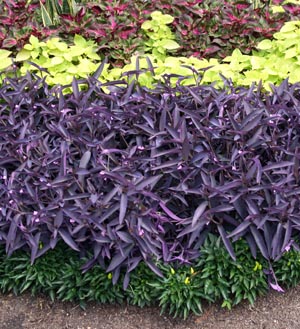
Ask Your Gardening Question
If you’re unable to find the information you need, please submit your gardening question here:
Featured Articles by Season

Latest Horticulture News
- Spring Dormant Pruning Season for Woody Plants Ending Soon
- Tips for Buying and Caring for Easter Lilies
- Spring is Tick Season in Wisconsin
- Bypassing Plant Pathogens: Promoting Tree and Shrub Health Through Proper Pruning
You May Also Like

We teach, learn, lead and serve, connecting people with the University of Wisconsin, and engaging with them in transforming lives and communities.
Explore Extension »
Connect with your County Extension Office »

Find an Extension employee in our staff directory »

Get the latest news and updates on Extension's work around the state

Feedback, questions or accessibility issues: [email protected] | © 2024 The Board of Regents of the University of Wisconsin System Privacy Policy | Non-Discrimination Policy & How to File a Complaint | Disability Accommodation Requests
An EEO/AA employer, University of Wisconsin-Madison Division of Extension provides equal opportunities in employment and programming, including Title VI, Title IX, the Americans with Disabilities Act (ADA) and Section 504 of the Rehabilitation Act requirements.
How to Grow and Care for a Wandering Dude Plant
Here’s how to care for this pretty trailing plant.
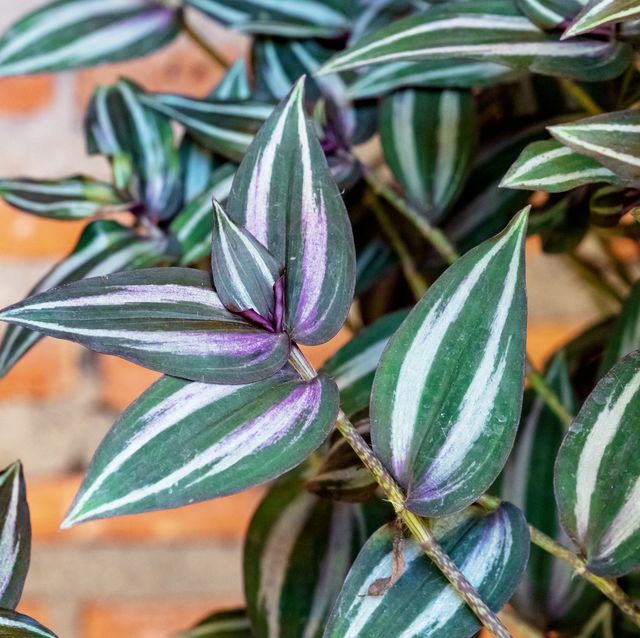
Country Living editors select each product featured. If you buy from a link, we may earn a commission. Why Trust Us?
With its long dangling stems, this plant tends to “wander” all over the place. Today, the plant often is called by its botanical name, Tradescantia, with “zebrina” referring to its silver striping.
It’s sometimes also called silver inch plant, but it can be confused with another plant, commonly called inch plant, Tradescantia fluminensis , which has solid green foliage.
Other varieties of wandering dude have become widely available in recent years, including the very popular nanouk type, which has foliage with pretty pinkish stripes and magenta undersides.
Native to Mexico, Belize, Guatemala and Honduras, the wandering dude usually is grown as a houseplant, but in USDA Hardiness zones 9 to 11 , it can be grown as a low-growing ground cover, too. ( Find your zone here .)
Read more: 15 Common Houseplants to Grow and Brighten Up Your Home
Ahead, learn everything you need to know about how to care for a wandering dude plant:
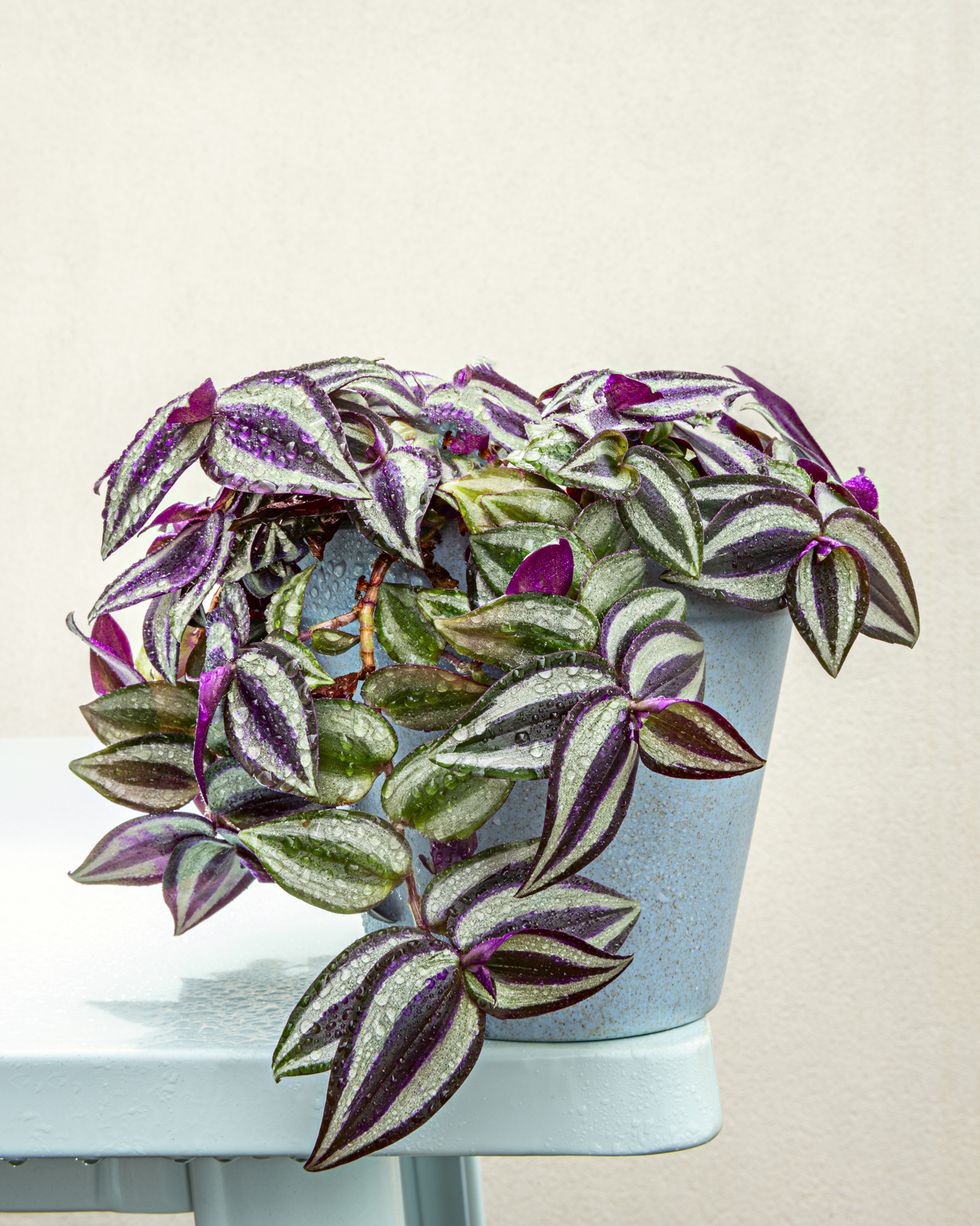
Wandering Dude Basic Info:
- Common Name: Wandering dude
- Botanical Name: Tradescantia zebrina
- Plant Family: Commelinaceae
- Type of Plant: Perennial, grown as houseplant
- Native Origin: Mexico, Belize, Guatemala, Honduras
- Sun Exposure: Full sun to part shade
- Mature Size: 6 inches tall by 1 foot wide
- Toxic to pets: Yes
Why Trust Us
I'm a garden writer with more than 15 years of experience growing houseplants, edibles, and landscape plantings. I also regularly trial new plant cultivars for performance and reliability, and test garden products to evaluate practicality and durability.
How Do You Care For a Wandering Dude Plant?
Give wandering dude bright, indirect light. If it doesn’t get sufficient light, this plant tends to get gangly and unattractive. Its purple coloring also may fade in low light, which means you should move it to a more brightly-lit room or use a grow light.
If your wandering dude is starting to get scraggly, simply snip off a few inches from the end of each stem to help stimulate the plant to push new, bushy growth. You can use plant snips or your fingers. You may need to pinch back frequently because wandering dude is a fast grower.
How Do You Water a Wandering Dude Plant?
You should water only when the plant feels mostly dry. Poke your finger in the soil before watering; if soil clings to your finger, wait a few more days and recheck.
If you let it get too soggy, that’s a sure way for it to get mushy and die. Like most houseplants, it’s better to err on the side of too dry, rather than too wet.
If you like, you can feed this plant with any general-purpose houseplant fertilizer, but it’s not entirely necessary.
Miracle-Gro Miracle-Gro Water Soluble All Purpose Plant Food, 3 lb
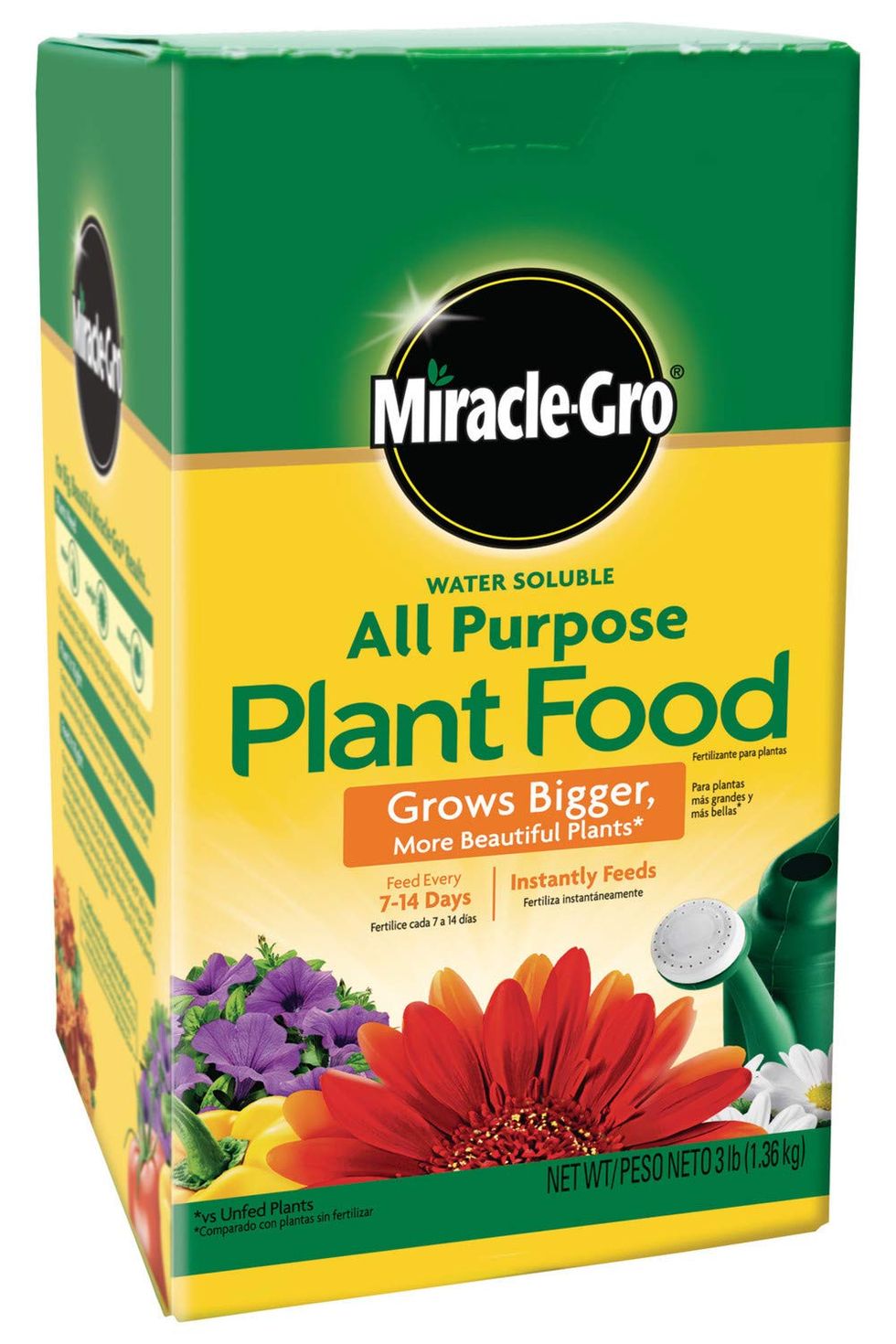
Can You Grow Wandering Dude Plant Outdoors?
Yes, it makes a great trailing plant spilling out of containers! Pair it with tall plants such as hibiscus, canna, elephant ears, or other tall, upright tropicals. If it starts to get leggy, just trim it back. Outdoors, it does best in full sun (northern climates) to part shade (southern climates). It may develop tiny pinkish flowers outdoors, though it rarely flowers indoors.
How Do You Propagate a Wandering Dude Plant?
Like pothos , this is a great plant to propagate to share with friends or to make new plants for yourself. Simply take a cutting, say, if it’s getting too long, then place it in a glass of water to root. Keep it in a bright spot in your home (not direct sunlight), and watch for roots to develop within about two weeks. Then plant in regular potting soil, and keep the soil lightly moist while it settles in.
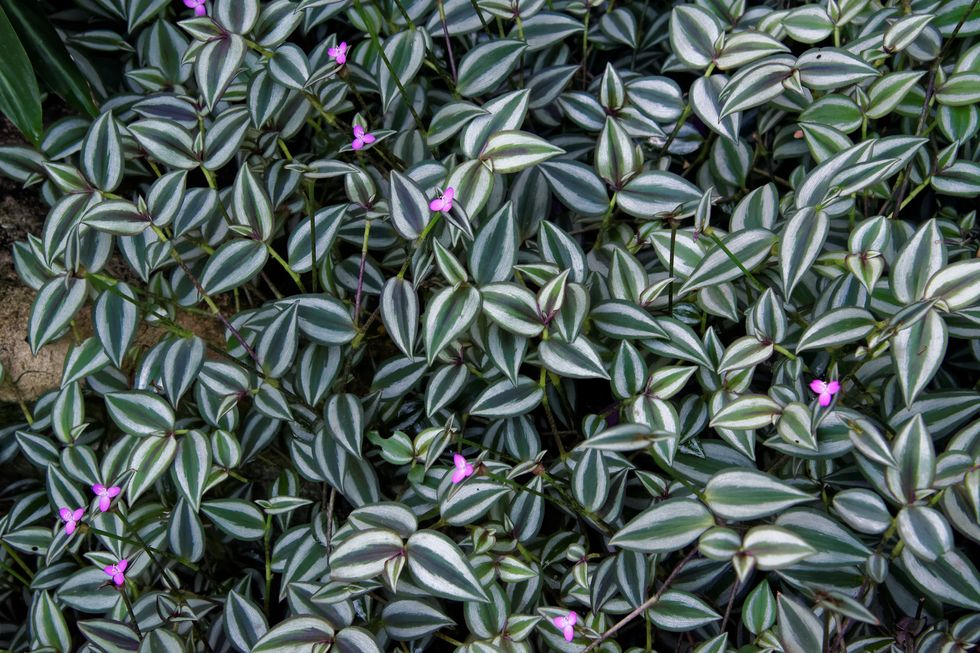
Is Wandering Dude Toxic to Pets?
According to the ASPCA , this plant is toxic to pets and may cause dermatitis, or irritation of the lips and mouth. But remember that any plant may cause vomiting or GI distress if eaten in large enough quantities, so keep this away from pets who are nibblers. Finally, call your vet ASAP if you suspect your pet has ingested it, even if you’re not sure. It’s always better to be safe than sorry!
In addition, the plant sap also may cause skin irritation in some people. Wear gloves when handling cuttings if you tend to have sensitive skin.
Read more: 28 Pet- Friendly Houseplants You Can Grow Without Worry
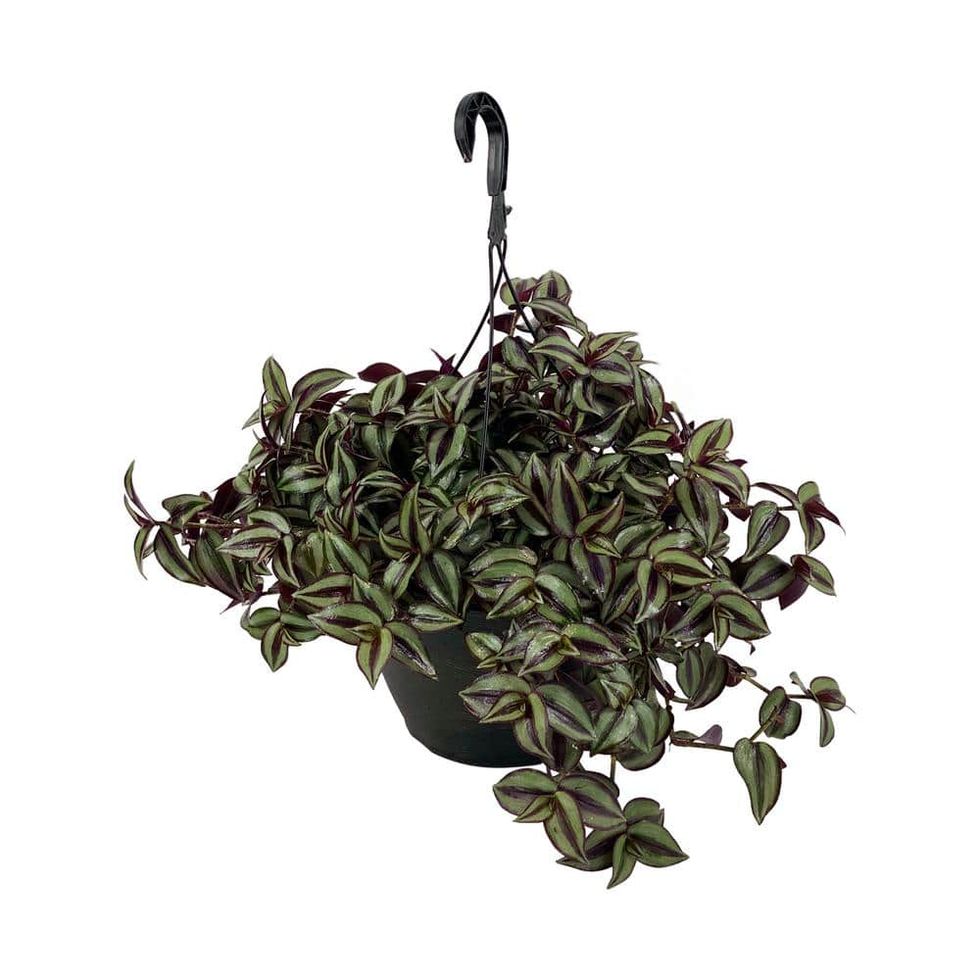
Vigoro Tradescantia in 11-inch Hanging Basket
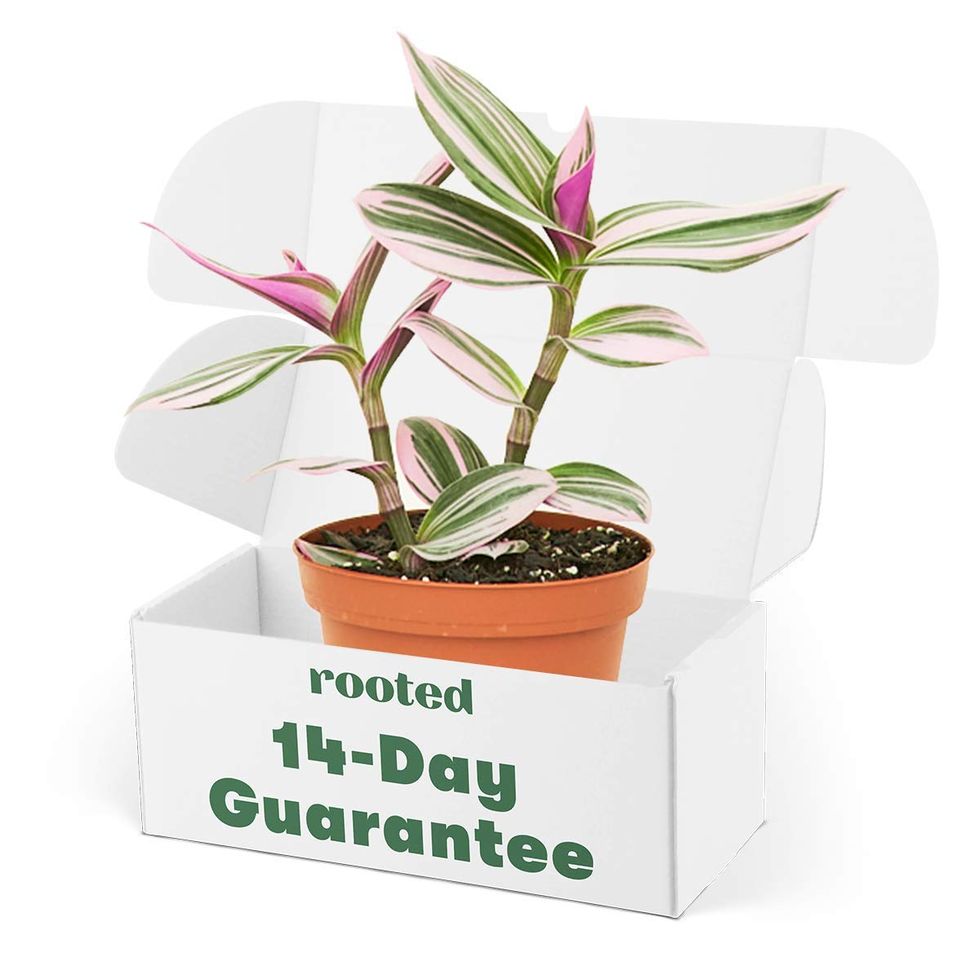
Rooted Tradescantia Nanouk, 4-inch pot
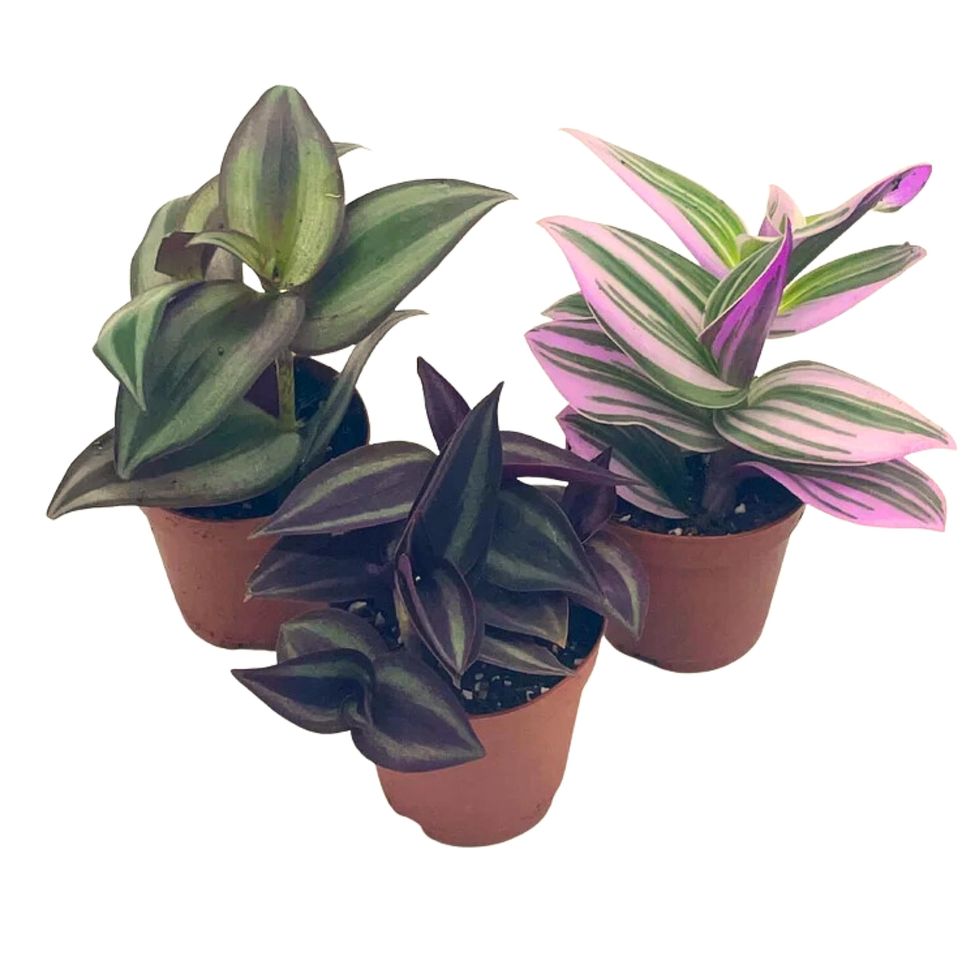
BubbleBlooms Wandering Dude Assortment
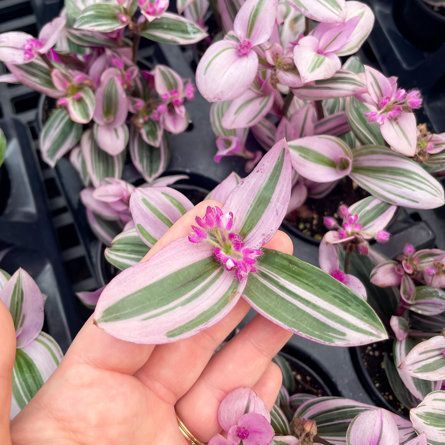
Wayfair Tradescantia Nanouk, 4-inch pot
Arricca Elin SanSone has written about health and lifestyle topics for Prevention, Country Living, Woman's Day, and more. She’s passionate about gardening, baking, reading, and spending time with the people and dogs she loves.
.css-1shyvki:before{background-repeat:no-repeat;-webkit-background-size:contain;background-size:contain;content:'';height:0.819rem;margin-bottom:0;margin-right:-0.9375rem;width:3.125rem;}.loaded .css-1shyvki:before{background-image:url('/_assets/design-tokens/countryliving/static/images/arrow.svg');}@media(max-width: 48rem){.css-1shyvki:before{display:none;}}@media(min-width: 40.625rem){.css-1shyvki:before{display:inline-block;}} Gardening Encyclopedia .css-unxkmx:before{background-repeat:no-repeat;-webkit-background-size:contain;background-size:contain;content:'';height:0.819rem;margin:0.7rem auto 0.9375rem;width:3.125rem;}.loaded .css-unxkmx:before{background-image:url('/_assets/design-tokens/countryliving/static/images/arrow.svg');}@media(max-width: 48rem){.css-unxkmx:before{display:block;}}@media(min-width: 40.625rem){.css-unxkmx:before{display:none;}}

Buying a Ficus Tree? Here's What to Know
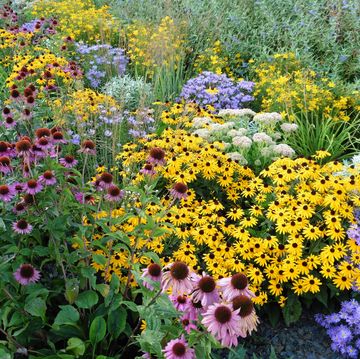
26 Full-Sun Perennials for Your Garden

Got Spider Mites? Here's How to Get Rid of Them
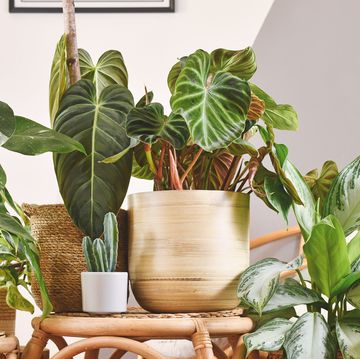
12 Big Leaf Houseplants You Need ASAP
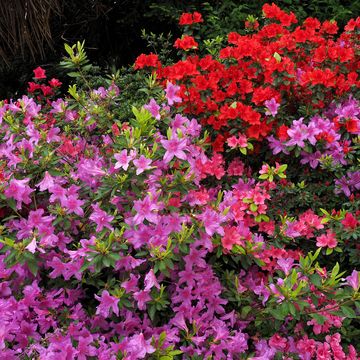
How to Grow Beautiful Azaleas

18 Spring Vegetables That Are Best Right Now

86 Essential Garden Flowers (With Pictures)
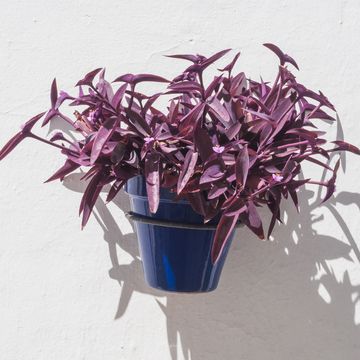
Here's How to Keep Purple Heart Plant Colorful
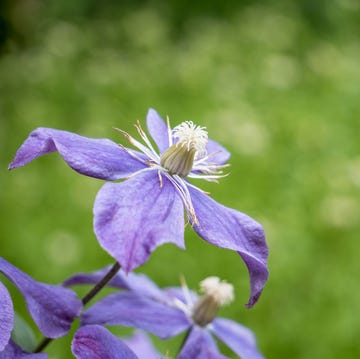
Your Guide to How to Plant and Grow Clematis
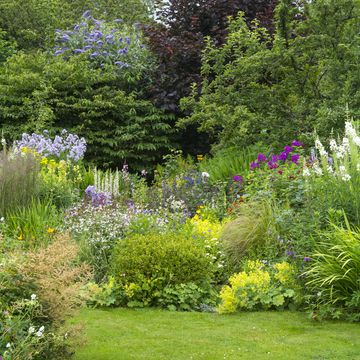
Get Started on Your Spring Garden Plan Now
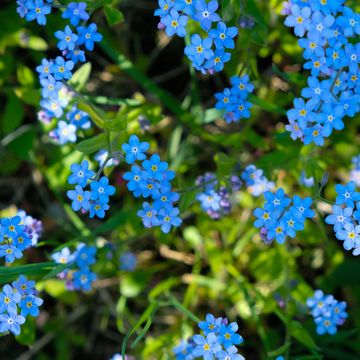
Here's How to Grow Forget-Me-Not Flowers

Tradescantia Tricolor Care From A to Z
By: Author Daniel
Posted on Last updated: July 15, 2021
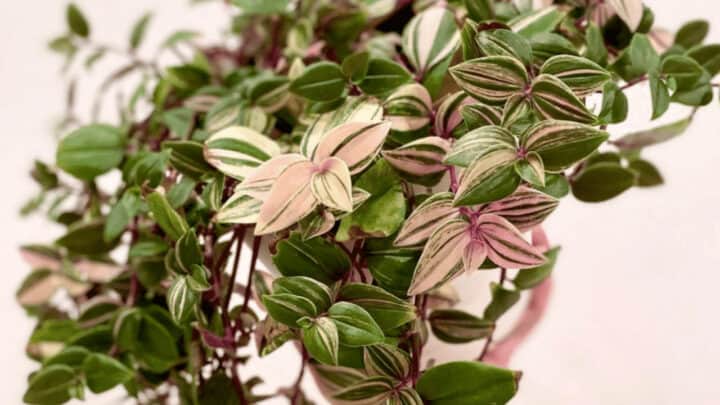
Sharing is caring!
- Facebook 11
(image credits, IG: oohyouplantsy )
I have a hide-away in my home that I escape to for some me-time. It is ultra-feminine and all done out in pink.
When I saw this stunning pink Tradescantia Tricolor plant at the nursery, I just had to have it! It offers the most glorious shades of pink transforming into a darker purple, interspersed with green.
Like all plants, the Tradescantia Tricolor has a difficult Latin Name. This one is Tradescantia fluminensis.
It is also known by other names including the Wandering Jew , Flowering Inch Plant, Wandering Willie, Wandering Gypsy, Purple Queen, Spiderwort, and Tradescantia.
What’s more, Tradescantia is a genus of 75 species of wildflowers. The name comes from John Tradescant, a botanist who lived during the 17th century.
The ‘wandering’ word refers to the fact that it spreads easily, wandering all over your window sill. They are very easy to grow at home. Most are native to South America where they grow as dense mats underneath forest trees.
To enhance the glorious pink shades, I place my Tradescantia Tricolor next to a Mosaic Plant , Fittonia albivenis. This is a trailing plant with deep pink veins in the green leaves. They make a great pair.
Let’s take a closer look at how to care for your Tradescantia fluminensis .
Table of Contents
Tradescantia Tricolor Care
For ideal Tradescantia Tricolor care, give it well-draining soil that will partially dry out between waterings. Fertilize with a good mix of peat, compost, mulch or humus, bark, pumice, or perlite. It thrives best in temperatures between 65°F to 75°F (18°C to 24°C). Temperatures should not drop below 50°F (10° C). The Tradescantia Tricolor wants bright light but not direct sunlight. Placing it near to a south-facing window is ideal.

Tradescantia fluminensis enjoys moist soil to thrive best. However, it must not be drenched or allowed to dry out completely.
Plant it in well-draining sandy soil. You can achieve this by mixing perlite into regular potting soil. Use a mix of 40% perlite and 60% potting soil.
Ensure that your pot has drainage holes at the bottom. This allows the excess water to run out and won’t cause the roots to become waterlogged and drown.
For ideal Tradescantia Tricolor care, I use natural organic additives. Including everyday materials like pumice or crushed bark, sterile garden compost, mulch, or organic manure gives you a rich, fertile soil that makes your Wandering Jew flourish.
Adding in some environmentally friendly coco Husk chips is a great way to introduce extra aeration into the soil. The Tradescantia Tricolor is not fussy about PH levels, try to maintain a neutral PH of around 7.0.
Tradescantia Tricolor does best in bright conditions with indirect sunlight. Allowing direct sunlight to fall onto the plant for too long causes the leaves to scorch.
Too little sunlight results in the leaves fading and not producing those lovely pinky shades.
Try to place your plant about 3 feet away from a south-facing window (if you are in the northern hemisphere), on a side table or high shelf. In this way, it gets the benefit of bright light but not direct sunlight. In general, 45 minutes of direct sunlight will be enough.
If you do need to stand it on a window sill, try to place a sun filter over the window. You can also use your décor skills and get it to nestle under another plant with large leaves, creating a natural umbrella.
If you prefer to plant your Tradescantia Tricolor outdoors, find a spot that gets bright light and limited direct sunlight.
Care tip for Tradescantia Tricolor: If your plant does not show healthy signs of variegated growth, ie, it is not displaying lovely different pink colors, it is probably getting too little light.
When it comes to watering care for your Tradescantia Tricolor, it is best to keep the soil moist. You need a balance between drenched and bone dry.
Watering once a week during the summer months is adequate. In winter, reduce watering to once every two weeks.
Because you are not drenching this plant, you should not create too much of a mess indoors. Place a plant saucer under your pot that is large enough to catch any water that may flow out.
When watering in winter, use lukewarm water, no plant responds well to an icy blast! I do notice that my Wandering Jew can get to the point of looking almost droopy. Then a good watering brings it back to life within 24 hours.
Tradescantia Tricolor care tip: You can also water from the bottom. This technique involves placing your pot into a tub or sink filled with a few inches of water. The drainage holes in your planter allow the water to slowly absorb into the soil without over-saturating it.
Temperature
Tradescantia species perform best at temperatures ranging from 65°F to 75°F (18°C to 24°C). They can, if necessary, withstand higher temperatures. If the temperature drops below 50°F (10° C), the leaves will suffer.
It will tolerate short-term exposure to cold weather but generally does not do well in the cold. If you live in a cold climate, consider growing your outdoor Tradescantia Tricolor in a container.
You can then bring it indoors during the winter months. All species of Tradescantia are Winter hardy in USDA hardiness zones 9 to 12.
Coming from South America, the plant does not require tropical temperatures to thrive. It is quite hardy, and as long as it is not exposed to frost you should be fine. It can even stand on a chillier window sill.
Your Tradescantia Tricolor is not overly fussy about humidity. It is not a desert plant nor a tropical plant, so the average house humidity of 30% to 45% found in a home should do fine.
In winter, running heaters and air-conditioners can dry out the air and change the humidity, so you will need to be aware of this.
If the humidity in your home is too high, at over 50%, this could result in the growth of mold and bacteria and will give your living space a musty smell. Installing a dehumidifier will help to solve the problem.
Tradescantia Tricolor care tip: I find that my plant responds well to a lovely soft shower from a watering can.
Although this does not increase humidity, it acts as a natural rain shower, wetting all the leaves and washing away dust and pests.
Make sure you do this outside and allow the plant to dry off before moving it back indoors.
Fertilizer
The Inch Plant loves to wander and grows fairly fast, spreading over window sills indoors and rocks outdoors. It does not require a serious fertilizing program.
Like many potted indoor plants, Tradescantia fluminensis does well with some extra fertilizer during the growing months of Spring through early fall.
I am a great supporter of eco-friendly living and that also applies to the plant fertilizers I use. I stay away from chemical fertilizers whenever possible.
My number one care hack for Tradescantia fluminensis is to buy or make my own natural organic fertilizer. If you have a liquid fertilizer, dilute it, and use it once a month.
Fertilizing plants outside of the growing season is not good. The fertilizer can end up harming the plant by burning the roots.
Natural organic fertilizers can be made using peat, pumice, perlite, mulch, coco husks, and crushed bark. A small compost making kit is a fun addition to any garden and makes good use of fallen leaves, dead flowers, and grass cuttings.
Propagation
The easy-to-grow Inch Plant is also easy to propagate. This can be done by simply snipping off a healthy stem, placing it into rich, moist soil, and watering from time to time.
You can also put the stem cutting into a tall vase of water and allow it to grow roots. Place the vase in a bright spot and keep an eye on it.
Roots will appear within a week. Remove the cutting and plant into your terracotta pot or unglazed planter.
Propagating your own house plants is a fun and rewarding experience, give it a try!
Tradescantia Tricolor gets its Wandering’ name because it loves to wander. It grows fairly fast and spreads over the edge of pots, along window sills, and over rocks. It also looks great as a ground cover next to pathways and walkways in a garden.
It has beautiful variegated pink shades, that darken to purple and are interspersed with green. The stems and leaves are soft and hairless.
The leaves are an oval shape with pointed tips. They are shiny and smooth and grow to about 1.25 to 2.5 inches (32 to 64mm) long.
The flowers are white and have 3 petals, about 0.5 to 1 inch (13 to 25mm) in diameter. The flowers appear in Summer in small clusters.
The best Wandering Jew growing condition is in a bright spot with indirect sunlight and average humidity.
This plant is a ground cover perennial. It does not require heavy pruning, but if it sprawls too much and becomes straggly, you should trim it back to keep it in shape.
Tradescantia fluminensis care tip: If your plant is producing only green leaves, your light conditions are not ideal.
It does this to conserve energy, as creating variegated leaves uses up more energy. Prune back the green leaves, allow it to recover and produce those glorious pink shades.
Tradescantia fluminensis is not fussy when it comes to pot size. It will thrive in a small pot for years and will grow happily in a large pot.
If you do want to repot your Inch Plant, Springtime is the best season to do this. Repot into a mix of fresh soil and perlite to boost growth.
You can add some gritty sand to the potting mix to enhance drainage. Water well but do not drench. Check that the PH of the soil is neutral at around 7.0.
Care tip: Ensure that your planter has drainage holes so that the water can flow out. You don’t want the roots to rot in stagnant water at the base of the pot.
Sieh dir diesen Beitrag auf Instagram an Ein Beitrag geteilt von D A I S Y (@oohyouplantsy)
Propagate Tradescantia Tricolor from cuttings
– This is best done in early Spring to late Summer, during the growing period
– Use a sterile sharp knife, scissors, or cutter
– Wear gloves as the sap can irritate the skin
– Select a stem that looks healthy and has a few sets of leaves
– Carefully cut off the stem at the base, where it joins another stem
– Remove the lower leaves by snipping off to leave a clean stem at the base
– You now have 2 options: propagate in soil or propagate in water
Propagating the cuttings in soil
– Prepare a pot with a mix of soil, gritty sand, and organic fertilizer
– Water well but don’t drench
– Push your finger into the soil and create a hole about 2 inches deep
– Place the offcut into the soil and pack the soil back to hold it firm
– Place the planter where it will get bright light but not direct sunlight
– Water well for the next few weeks
Propagating the cuttings in water
– Fill a clear vase, tall glass, or container with water
– Place the cutting into the water
– Keep it shallow enough so that the leafy section is above the waterline
– A slender glass works well as the leaves will balance on the top rim
– Fine roots will start showing in about 1 to 2 weeks
– Wait for the roots to grow to 1 to 2 inches long
– Plant into a pot as described above
Common problems with Tradescantia Tricolor
Pest control.
Like all plants, your Tradescantia Tricolor can be attacked by pests. Common pests that affect the Wandering Jew are spider mites and aphids .
An easy way to get rid of them is to give your plant a good shower and wash them off. If they persist, you can spray with a solution of insecticidal soap.
Tradescantia Tricolor care tip for pests: Make your own insecticidal soap. Use all-natural soap, not detergent.
Mix 5 tablespoons to 1 gallon of cooled, boiled water. Add in 1 teaspoon of vinegar and 1 teaspoon vegetable oil to get the solution to stick. You can also add a teaspoon of garlic. Pour into a clean garden sprayer that has a fine spray setting and spray the plant.
Leaves don’t have variegated colors
If you notice that your Tradescantia Tricolor is only producing green leaves, this is due to bad lighting. Bad lighting reduces the energy of the plant.
To create the gorgeous colors, it needs energy, so it will conserve energy and only create green leaves.
Leaves look scorched
If your leaves are turning brown or look scorched, your plant is getting too much direct sunlight. Move it to a more suitable position, or protect it with sunscreen if possible.
Plant looks scraggly and untidy
Tradescantia Tricolor grows fast and spreads. You need to keep it in shape by trimming now and then. Remove any dead stems and leaves. Trim back into the neat shape you want.
Rotting roots
This is a sign of too much water. Tradescantia Tricolor does not enjoy drenched soil. Ensure that your container has drainage holes and allow the soil to partially dry out.
Tips to grow Tradescantia Tricolor problem-free
– Avoid overwatering your Tradescantia Tricolor
– Keep soil moist but well-drained
– Ensure that your plant is in a bright spot, it does not enjoy the dark
– Do not place in direct sunlight
– Does not enjoy very dry or very humid conditions
– Fertilize during the growing season with organic mixtures
– Trim from time to time if it becomes scraggly
Frequently asked questions about Tradescantia Tricolor
Is tradescantia tricolor considered invasive .
In some countries, Tradescantia Tricolor is invasive. This is because it spreads fast outdoors and can become invasive. It grows as thick mats in forest areas, blocking out the light for other ground plants.
Can Tradescantia Tricolor grow indoors?
Yes, it makes a very attractive indoor plant in a decorative pot. It looks fabulous in a hanging basket, or on a high shelf where you can let the long stems flow downwards.
Is Tradescantia Tricolor easy to care for?
Yes, this is a great plant for beginners. It requires very little maintenance and is hardy and strong. You don’t want to be discouraged by losing your first plant. The Tradescantia Tricolor will flourish in a bright spot out of direct sunlight.
Is Tradescantia Tricolor poisonous?
Do you want a glorious plant with pink tones? The Wandering Jew is eye-catching and easy to care for. It is a great choice for a beginner to create a focal point in a room or on a patio, in a hanging basket.
Once you are successful in growing your Tradescantia Tricolor, you can add other Tradescantia plants to your collection. Take a look at the lovely Tradescantia occidentalis, Tradescantia zebrina, and the Tradescantia pallida.

Daniel has been a plant enthusiast for over 20 years. He owns hundreds of houseplants and prepares for the chili growing seasons yearly with great anticipation. His favorite plants are plant species in the Araceae family, such as Monstera, Philodendron, and Anthurium. He also loves gardening and is growing hot peppers, tomatoes, and many more vegetables.
Related Posts
You are reading this guide to learn more about the Wandering Jew Plant and its…
I love plants that offer an eye-catching burst of color. They sure put a smile…
Tradescantia Nanouk is not difficult to care for if you keep in mind its basic…
Are you looking for a care guide for Anthurium Andraeanum? The Flamingo flower is a…
Among my favorite houseplants is NJoy Pothos, the one that sparked my interest in having…
Several Calathea species are highly valued as houseplants, such as the Calathea Zebrina…

IMAGES
VIDEO
COMMENTS
It is one of the best types of wandering jew plants on the list. 3. Tradescantia pallida. It also goes by the name "Purple Heart" and is native to Mexico. Deep purple foliage, adorned with light purplish-pink flowers, looks marvelous and is the reason that it's one of the most popular types of wandering jew plants!
All types of wandering jew plants are fairly easy to care for. As long as you give them a good amount of light and prune regularly, you should enjoy your tradescantia for many years. Light and Temperature. This is a houseplant that really thrives in bright indirect light. The brighter the light you provide your wandering jew plant, the more ...
The wandering Jew plant is a common name for different species of plants that belong to the Tradescantia genus. There are around 75 different types of plants in Tradescantia genus and some are called inch plants, spiderwort, striped wandering Jew, Boat Lily, Purple Queen, or flowering inch plant. Wandering Jew plants are great house plants because they are relatively easy to care for.
To care for a Wandering Jew plant indoors, place it in a location with bright, indirect sunlight, such as near a window. Water it when the top inch of soil feels dry, typically every 1-2 weeks, and provide well-draining soil. Additionally, mist the plant occasionally to increase humidity and remove dust from the leaves.
Fill a 6-inch to 1-gallon container that drains with a rich, well-drained potting mix. Water the soil to settle it. Make about a 2-inch indentation in the soil where you want to place the Wandering Jew cutting. Remove the bottom leaves from the cutting where you will be inserting it into the soil.
This type is one of the best types of wandering Jews topping this list. Its leaves resemble the stripes of a Zebra hence the name. The purplish-green foliage comes with a silver outer edge and white stripes running down lengthwise. It grows to a height of 6-12 inches and can successfully grow as ground cover.
Tradescantia ( / ˌtrædəˈskæntiə / [4]) is a genus of 85 species [5] of herbaceous perennial wildflowers in the family Commelinaceae, native to the Americas from southern Canada to northern Argentina, including the West Indies. Members of the genus are known by many common names, including inchplant, wandering jew, spiderwort, [6 ...
Wandering jew is a stunning plant that have heart-shaped green leaves with purple stripes and a silvery sheen. Depending on the type, the leaves may be solid or have different colors on them. ... 3 Main Types of Wandering Jew Plants. The common names "wandering jew" and "wandering dude" really refer to three distinct species that are ...
W andering Jew Plant Care. To keep your Wandering Jew plant thriving, ensure it receives bright, indirect sunlight. Keep it in average room temperatures of 60-75°F (16-24°C). Fertilize once a month during spring and summer. In winter, relocate the plant to a cooler area with temperatures of 54-59°F (12-15°C).
Wandering Jew plants have a limited lifespan of just a few years, and as a potted plant, you'll notice your wandering Jew becoming very leggy after just two to three years. Unlike other fast-growing plants that benefit from pruning, cutting back a wandering Jew doesn't work well to renew its growth; it simply controls the spread.
Conclusion: Tradescantia Plants. The Tradescantia has many lovely wandering Jew varieties: Tradescantia albiflora, Tradescantia virginiana, Tradescantia spathacea, Tradescantia zebrina, and more are being created with new cultivation and cross-propagation methods. Soon, entirely new types and colors of spiderworts will grace our homes.
Wandering jew plants are super easy to propagate. Take cuttings that are 3-4″ long, and include a couple of leaf nodes. Dip the cut ends into rooting hormone, then stick them in moist soil. Don't allow the soil to dry out, and keep the air around the cuttings humid. A propagation chamber makes this simple.
Inch plant, Spiderwort, Wandering jew, Wandering zebrina, Zebra plant • Types of Inch Plants. This beautiful plant has over 70 popular varieties and more often than not you can find most of these varieties in your neighborhood growing with abandon in either hanging plants or as ground cover. Some of the most common tradescantia varieties are: 1.
Commonly called purple heart or purple heart wandering jew (and occasionally "Moses in the Basket," although this usually refers to a different species) this herbaceous plant in the Commelinaceae (spiderwort family) is a low-growing trailer that is hardy in zones 7-10, but is easily grown as an annual or houseplant in colder climates. ...
The common name wandering Jew refers both to the wandering habit of several species within Tradescantia, and also to a character from early Christian mythology. Description Flower close up. Tradescantia fluminensis is a perennial groundcover that spreads along the ground with soft, hairless stems and leaves. The fleshy stems root at any node ...
Tradescantia zebrina, formerly known as Zebrina pendula, is a species of creeping plant in the Tradescantia genus. Common names include silver inch plant and wandering Jew. [1] The latter name is controversial, [2] and some now use the alternative wandering dude. [3] The plant is popular in cultivation due to its fast growth and attractive foliage.
How to Grow Wandering Jew. Wandering Jew is hardy in zones 9 - 12 so most of us grow it as a houseplant. Indoors, it likes bright but indirect sun. Too much sun and the leaves will scorch. Too little sun and the color on the leaves fades. I grow mine in a north facing window with indirect afternoon sun.
The wandering dude is a novice plant parent's dream: It's an easy to grow plant, has beautiful silver, green and magenta foliage, and drapes beautifully from pots.Wandering dude (Tradescantia zebrina) also is super-simple to propagate so you can make more baby plants (for free!).With its long dangling stems, this plant tends to "wander" all over the place.
Tradescantia Tricolor Care. For ideal Tradescantia Tricolor care, give it well-draining soil that will partially dry out between waterings. Fertilize with a good mix of peat, compost, mulch or humus, bark, pumice, or perlite. It thrives best in temperatures between 65°F to 75°F (18°C to 24°C). Temperatures should not drop below 50°F (10° C).
The Wandering Jew by Gustave Doré. The Wandering Jew (occasionally referred to as the Eternal Jew, a calque from German "der Ewige Jude") is a mythical immortal man whose legend began to spread in Europe in the 13th century. In the original legend, a Jew who taunted Jesus on the way to the Crucifixion was then cursed to walk the Earth until the Second Coming.
The Wandering Jew, illustration by Gustave Doré, 1856. wandering Jew, in Christian legend, character doomed to live until the end of the world because he taunted Jesus on the way to the Crucifixion. A reference in John 18:20-22 to an officer who struck Jesus at his arraignment before Annas is sometimes cited as the basis for the legend.
Commelina cyanea is a trailing herbaceous perennial plant, whose stems grow along the ground. [1] It readily roots at the nodes when they come into contact with the soil. They die off in winter. [5] The leaves are ovate to narrow-ovate, and measure 2-7 cm (1-3 in) long by 0.5-1.5 cm (0.20-0.59 in) wide.